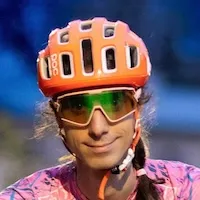Destination Tauern - Part 1
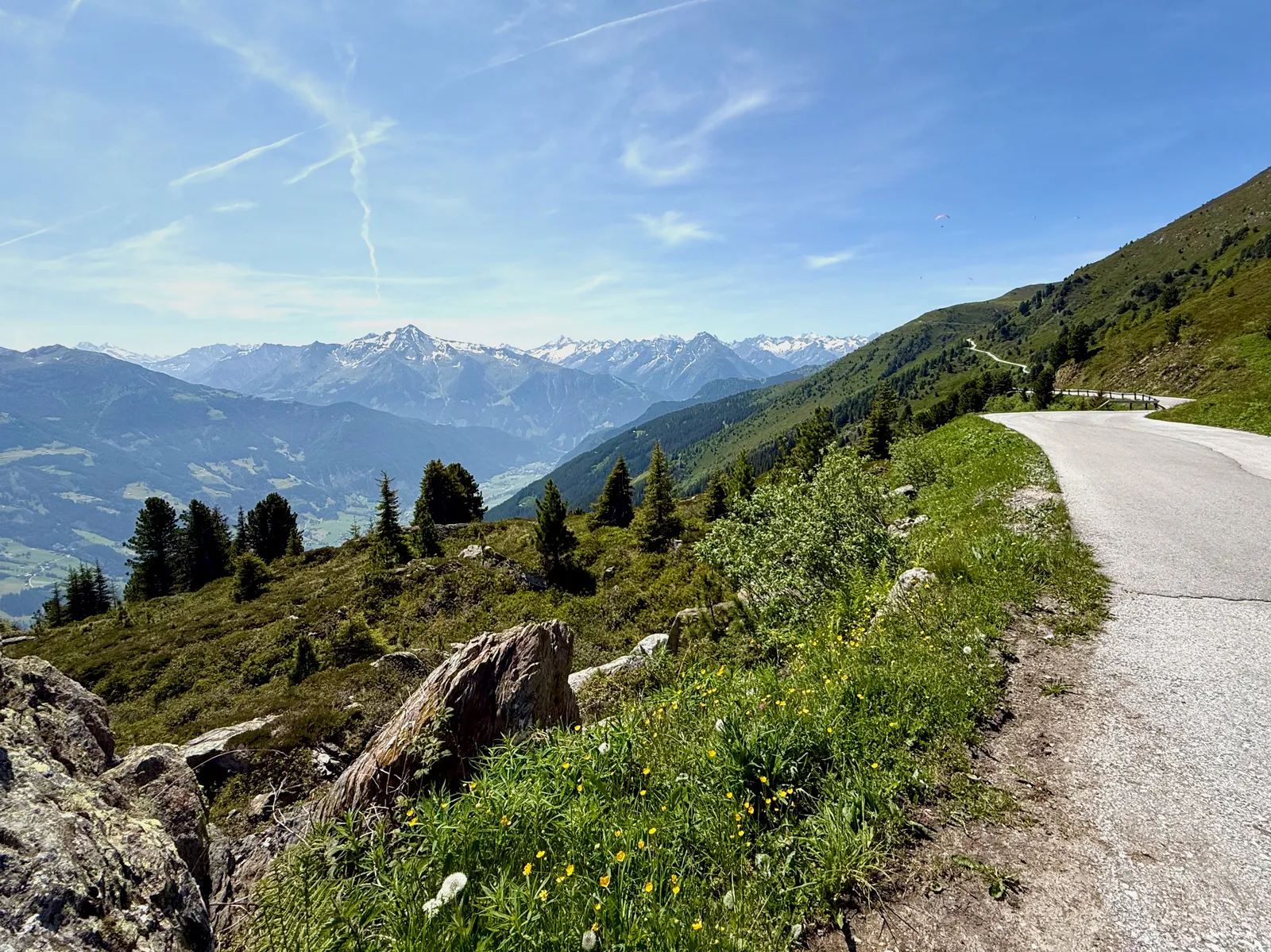
I am not an ultra rider. I admire the people who can ride for two days non-stop, ticking off thousands of kilometers in just a few days. I admire those who have the willpower to endure difficulties and hardships I can only imagine, who keep going through sleep deprivation, underfueling, the dead of night, and walls of torrential rain.
I am a racer at heart. My favorite rides last between two and six hours and are full of elevation. I can push through the sharp pain of attacking a hill that leaves me gasping, or through the effort of sprinting up a crest. I can reach deep into the abyss of suffering while climbing monstrous passes at sweet spot or threshold, trying to defy my shrinking glycogen reserves just to shave another minute off a two-hour ascent. I can endure the agony of teetering on the edge of a bonk.
But I can’t deal with long, mundane flat transfers, where you have to slow down to conserve energy instead of cranking up the tempo. I can’t deal with endless hours or nights in the saddle, when all I really want is a lush meal and to put my legs up after a brutally intense day.
I am not an ultra rider. I’m a racer at heart. And with this trip, even though the days were far from ultra range, I’ve reminded myself exactly why.
Intro
It was around winter 2022 when I first got the idea to ride up the Großglockner Hochalpenstraße. After falling in love during my first brief visit to the Alps, I started researching vacation options. Prague seemed to have a good train connection to Zell am See, which lies directly at the mouth of the valley leading up to the Edelweißspitze slopes. But back then, I didn’t have the confidence or willpower to travel alone, and after moving countries, I had no riding friends around. With Prague also not lying directly on the route between Kraków and Zell am See, I couldn’t convince any of my old cycling buddies to join the trip either.
So when I had proven to myself what I could do in France, and after I had to cancel yet another trip to Italy, I looked at Austria again. This time, easy train access and cheap tickets made the decision simple. Picking the dates wasn’t complicated either: I just selected the days with the lowest travel cost. That gave me five days between my ungodly early arrival in Innsbruck and the evening before my departure from Vienna. I plotted a track between my start and endpoint, and then, as always, started adjusting it. When I was finally happy with the sights I wanted to see, I had an excellent idea. If I was only going to be away for four nights, I might as well skip camping and book accommodation along the way. Sure, it would be a bit more expensive, but with so few nights, I could manage, and I’d be able to leave behind my tent, sleeping bag, and mattress, reducing my planned 7 kg of luggage to just 4!
While finding affordable bookings in the High Tauern was easy, it proved to be much trickier in the lower Alps, closer to Vienna. In the end, I managed to reserve some places a bit off my original route, which triggered yet another round of replanning. After a few more hours of hard negotiations with Komoot, I finally landed on a final plan. It had just one issue: because of the sparse accommodation options, it was virtually impossible to divide the last two days equally. I ended up with Day 4 planned at 180 km, and the final one a modest 100.
With train tickets bought, rooms booked, the route fully plotted, and every luggage item planned and meticulously weighed, the waiting began.
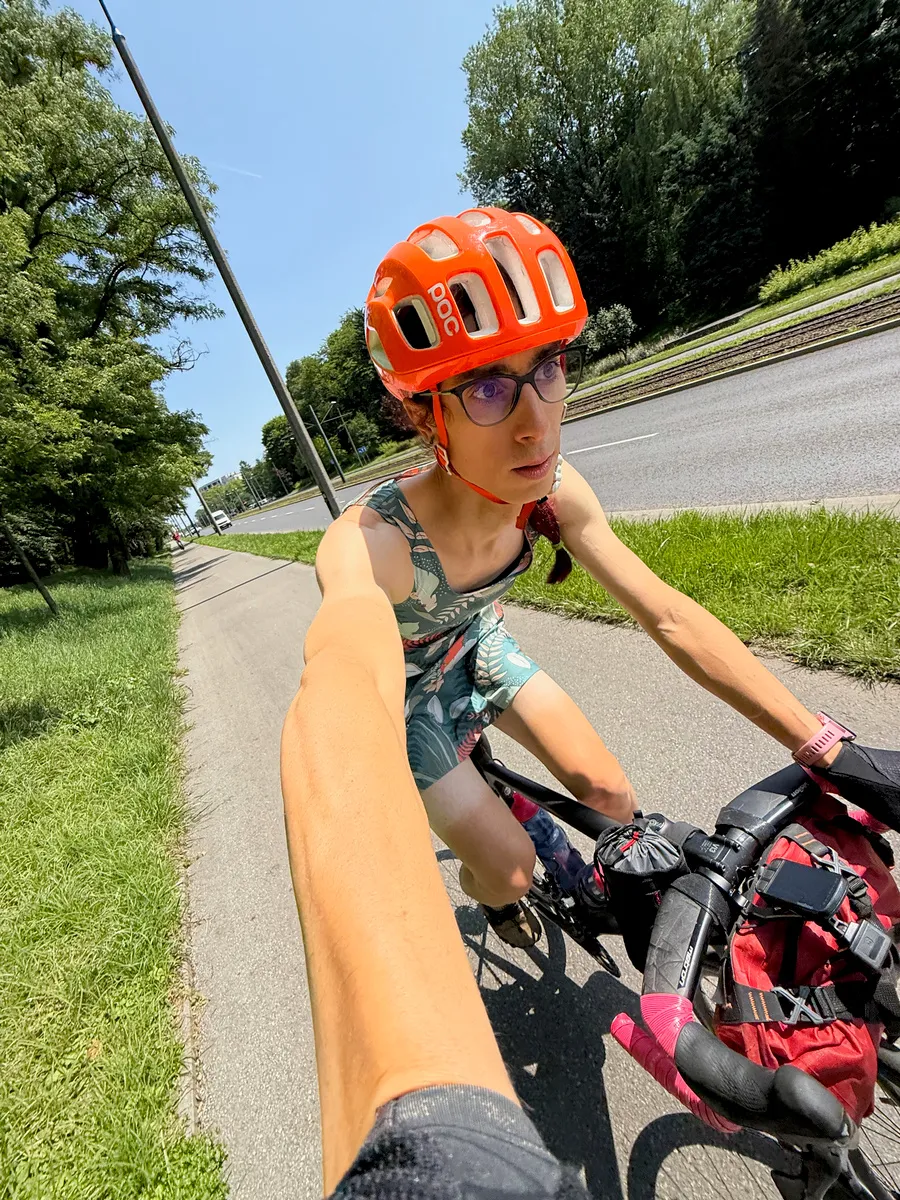
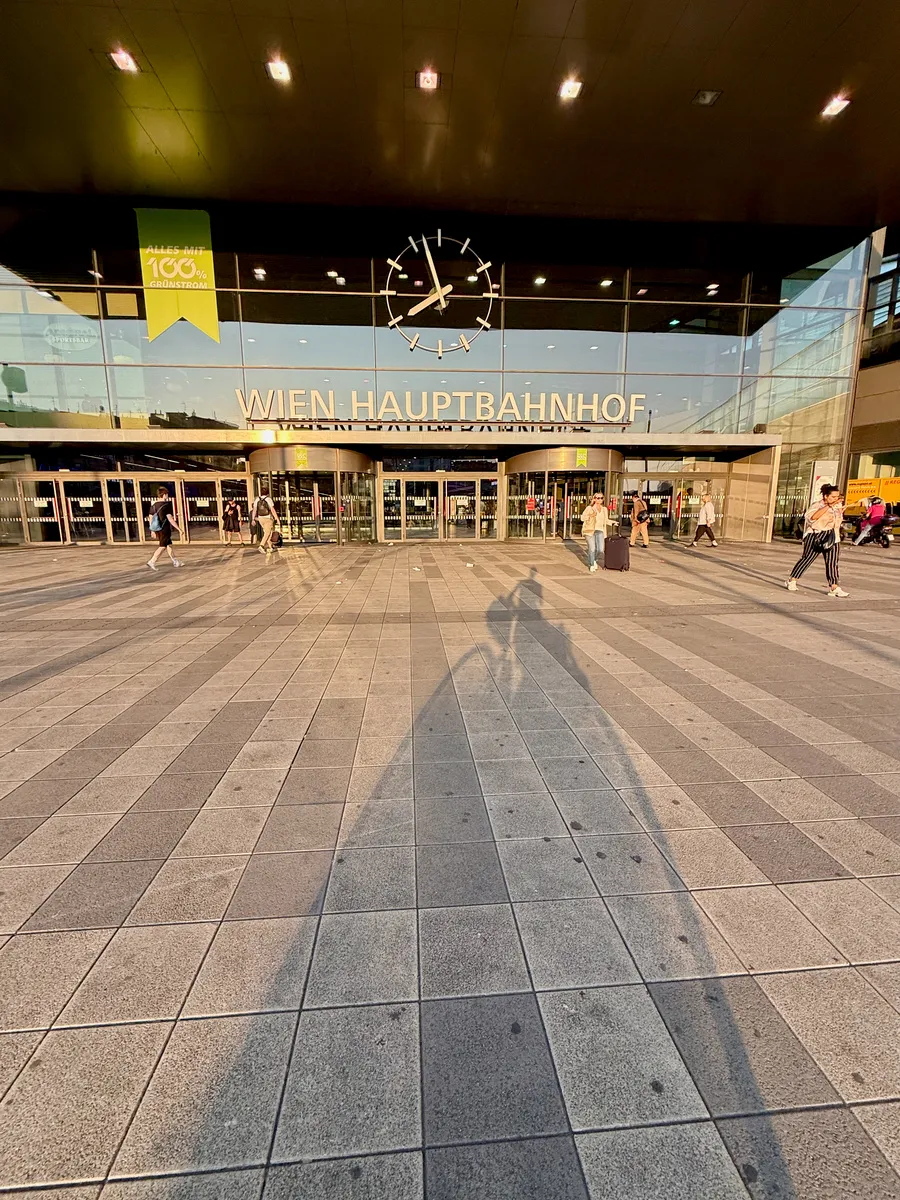
Two days before departure, I was already almost packed and ready to go. With everything but electronics prepared and stowed away in my saddle bag, one huge thing was finally off my mind. However, I started feeling anxious. Some kind of Reisefieber, but far more intense and unsettling. I was afraid.
I was afraid of the goal I had set for myself. I wanted to ride I almost 800km with 14 000m of climbing in only 4 and a half days, with no rest day. I was afraid it was too ambitious, and that I would fail spectacularly. I talked about it with a friend, who tried to reassure me: “If you didn’t feel that fear, it would mean your goal was too easy.” But it didn’t really help. The truth was, I was shit scared.
But the ride was planned. The bed and breakfasts were booked. “If you’re scared of something, do it scared,” I figured. Two hours before my train, I rechecked my packing list one last time, strapped the bags to my bike, put on my camping dress, my only off-bike outfit, and rode to the main station, heading toward adventure.
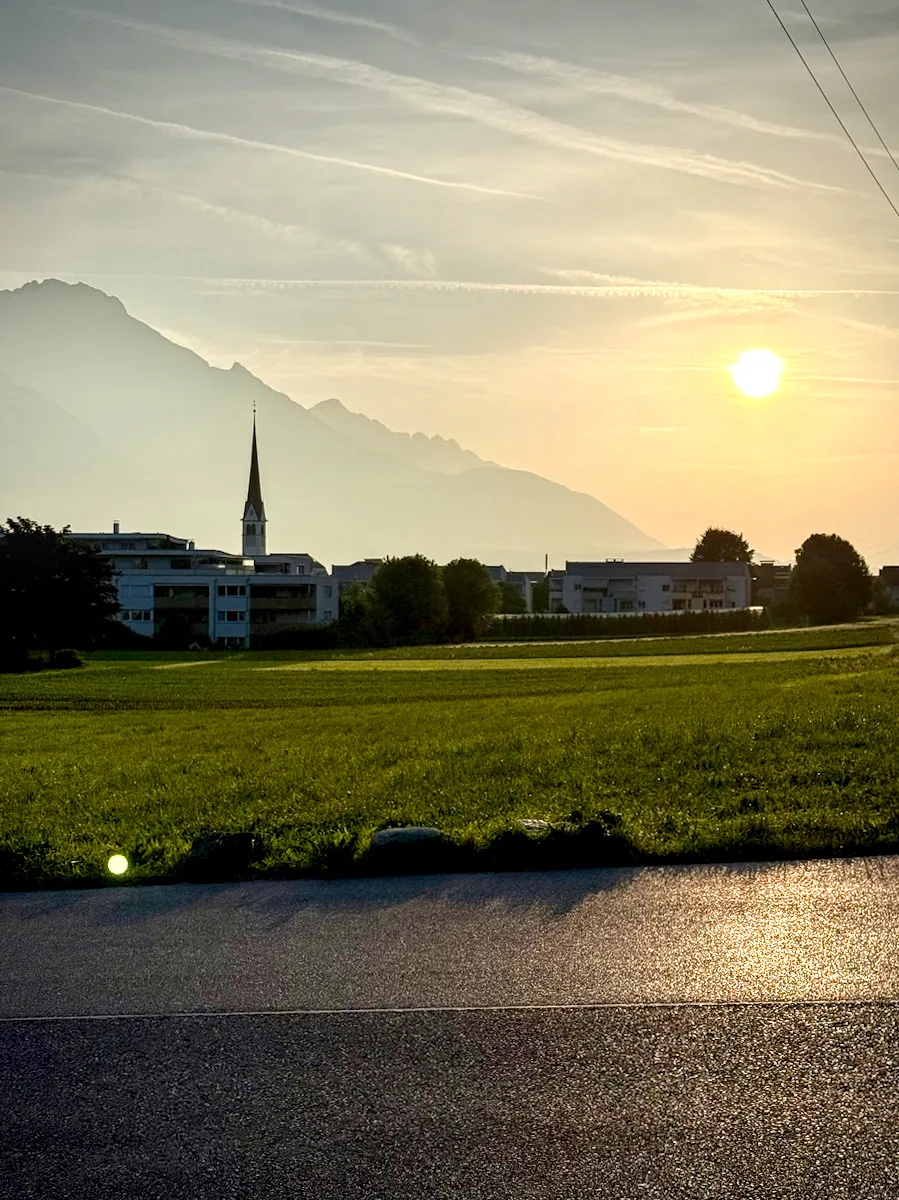
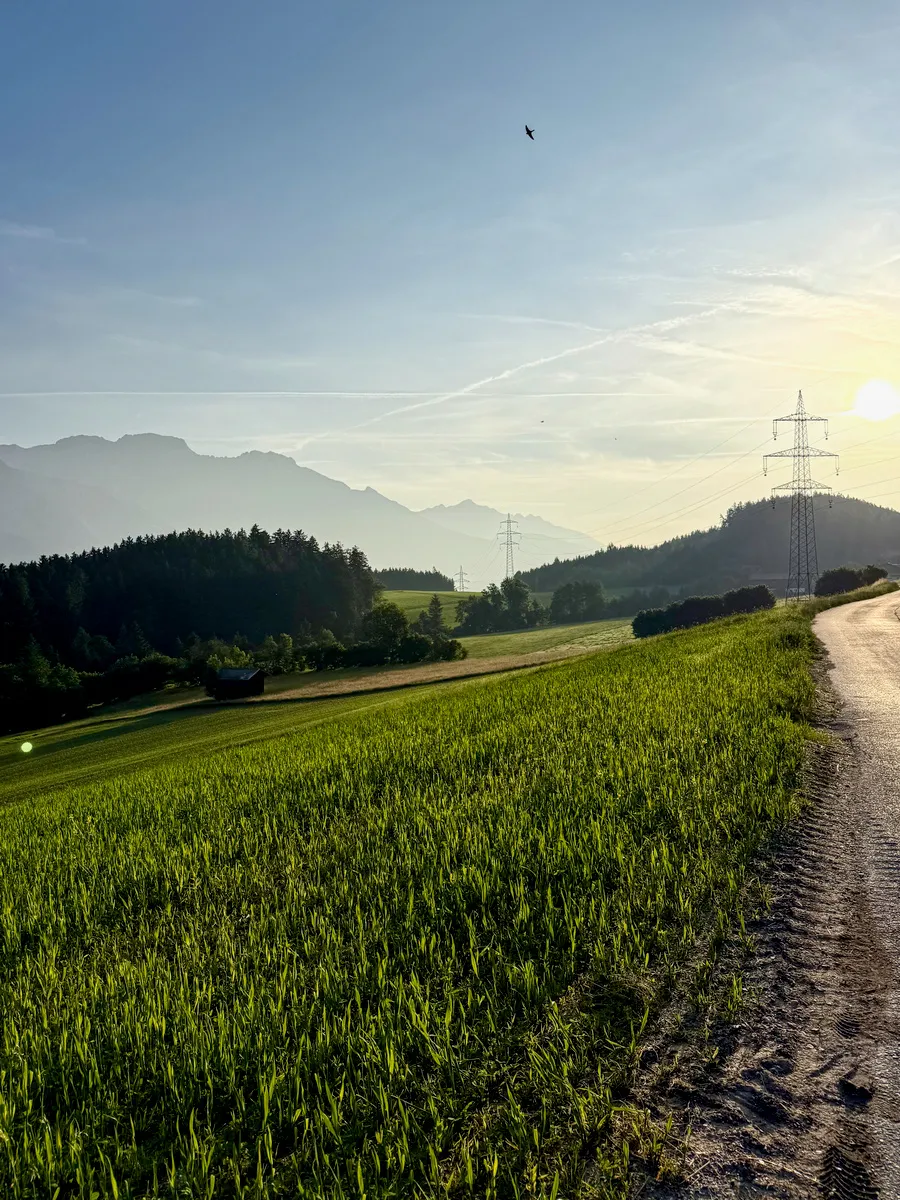
Day 1 - Innsbruck to Mittersill
The night wasn’t particularly restful. I rode the NightJet train from Vienna to Innsbruck, and my co-passenger, who was on the larger side, was spilling into my seat, leaving me crunched against the window. I slept lightly, waking often. So when I noticed the train pulling into a station over 40 minutes before the scheduled arrival, well before any of my alarms, I groggily peeked outside to check the station name and gauge how far I still had to go.
To my total astonishment, the sign read Innsbruck Hauptbahnhof.
I woke my co-passenger, as I needed to get off my seat to start preparing to disembark. The moment he saw the station name, he jumped up and bolted off the train like a man being chased by a pack of bears. I didn’t even have time to tell him the train wouldn’t depart again for another 30 minutes or more…
With plenty of time on my hands, I decided to make use of the train’s facilities to freshen up before the day ahead. I brushed my teeth, washed my face, and changed out of my dress into my cycling kit. Then I disembarked, took a huge whiff of crisp alpine air, and wandered into the station in search of an open café. Luckily, I found one, and soon I was enjoying a fresh brew and a couple of pastries.
But soon it was time to hit the road. I checked that the bags were securely strapped, loaded up my Bolt… only to realize that, despite meticulously planning every aspect of the trip, I had forgotten to download the maps. I tried to connect to the city’s free Wi-Fi, to no avail. So I gave up and decided I’d just follow the pre-loaded track line for the day and sort out the maps later, once I got to my accommodation.
Following the arrows on a blank screen, I began lazily rolling toward the edge of the city and the first climb of the day. Innsbruck was still very much asleep, with only a few early risers and cars moving through the golden rays of morning sun. Between the buildings, I caught my first glimpses of the towering mountains surrounding the city.
Then I noticed a landmark I had totally forgotten about – the Bergisel ski jump. Seeing that it was only 2 km away, I took a very brief detour. I didn’t ride all the way up to its base — knowing I had a pretty long day ahead of me, I didn’t want to lose too much time. Instead, I rode to a point where I could clearly see the tower. That was enough, and after a short pause, I rolled back to rejoin my track.
I started climbing while the world was waking up. Soft sunrays grazed the tarmac, the grass, and the mountaintops. Birds were singing their happy songs, and I was warmed up enough to take off my jacket and ride in short sleeves. The first sharp kick led me to a road I knew well from its virtual version: the lower section of Zwift’s Innsbruck KOM. It’s funny how identical the real road is in gradient and layout, and yet how completely different the experience feels.
I didn’t ride the full KOM, though. I followed the main road to the first village, Aldrans, and then turned onto smaller roads winding through farms and fields.
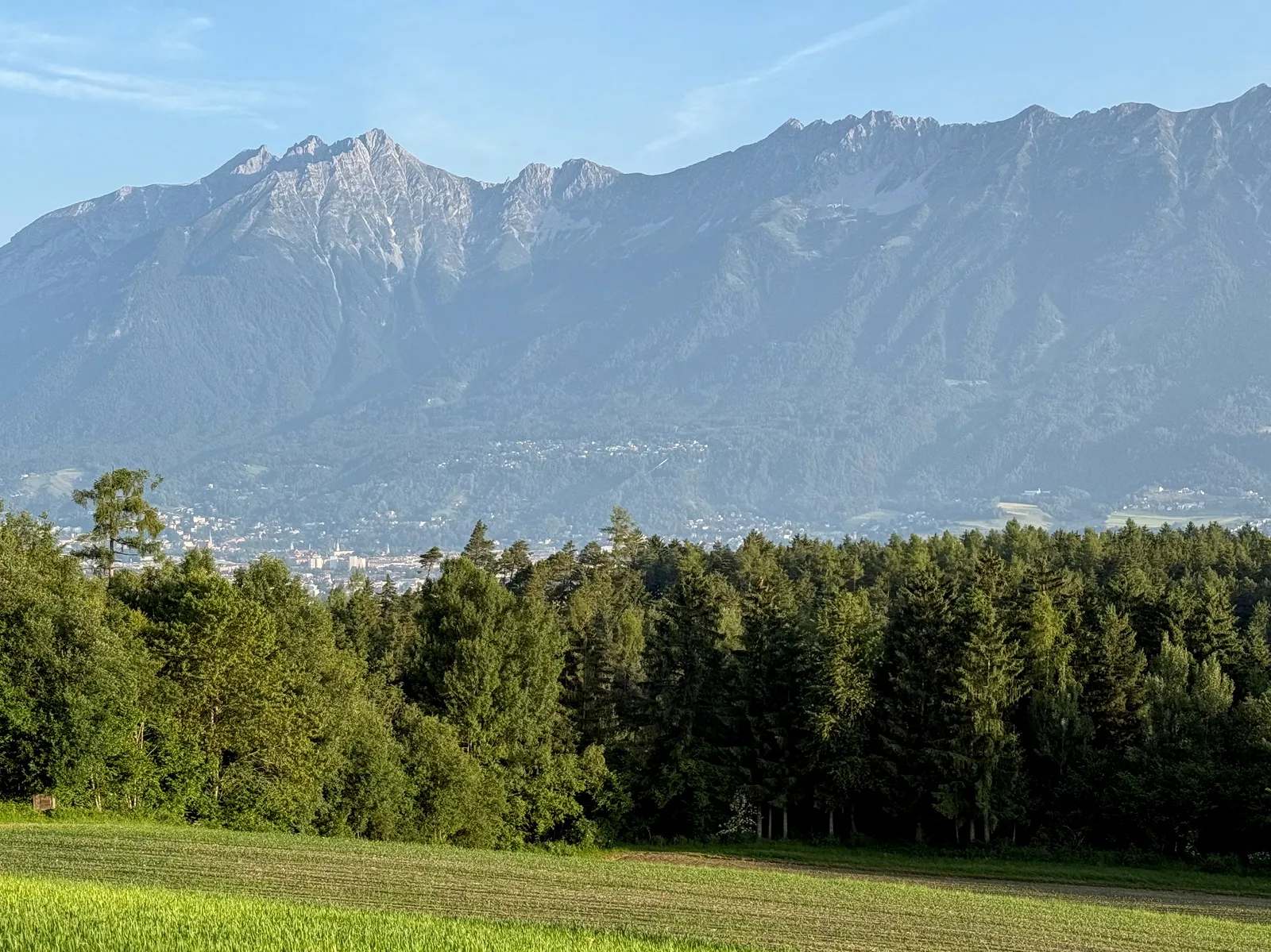
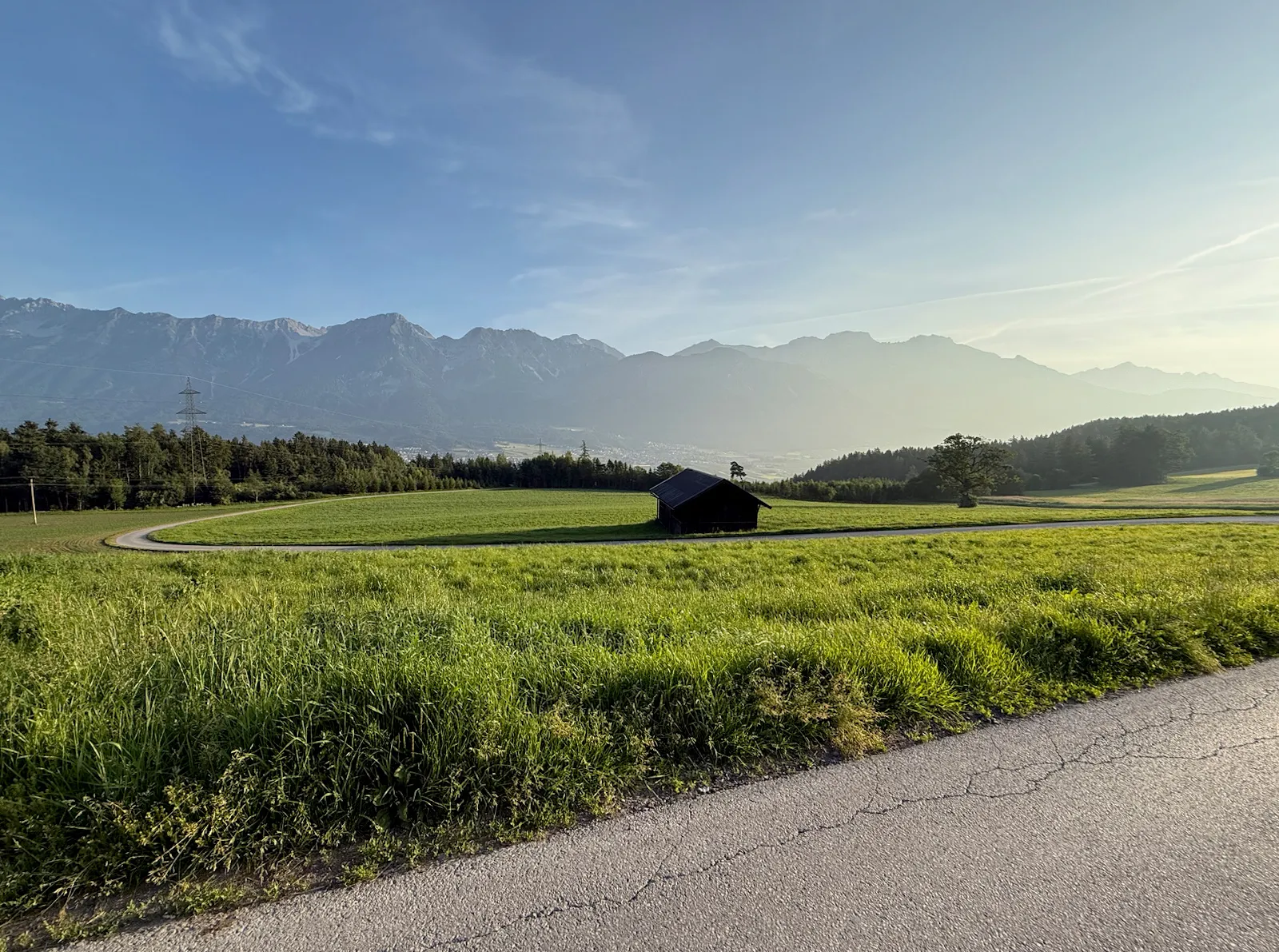
Planning trips and drawing routes is the Gwent of my cycling game — a hobby within a hobby. I have far more ideas than I could ever ride. When I’m not on the bike, I can spend hours in front of a screen, mapping out plans. One thing I tend to do, and at which I excel, is finding those little roads, hidden gems far from the rush of main carriageways or busy cycling routes. They’re sometimes a bit harder to reach, with rough, worn surfaces that have seen better days. Some are more remote, and require steeper climbing. But the tranquillity they offer is almost always worth it. They reward you with views far more engaging than any bike path on the valley floor. You stop in the middle of the road, breathe in the fresh morning air tinged with a faint hint of distant manure, and take in the magnificent view of the valley, accompanied only by birdsong and the silence of the landscape. You soak it all in, savoring the moment, knowing that once again, you’ve found a road that’s a diamond among zirconias.
The first part of the day was a stroll through tiny hollows scattered along the main valley. With steep but short climbs and fast, freezing descents, time flew by, and after just an hour and a half, I joined the path running along the river. I was spinning lazily, but with a flat road and a slight tailwind, I ticked off the distance quickly. As the morning went on, more cyclists began to appear on the path. Soon, it was time to take the right turn into the Zillertal Valley, and with it came the first views of true High Alpine peaks.
The bike path flowed through fields and alongside the river. the Ziller Valley feels noticeably less urbanized than the Inn Valley. The sun had climbed higher in the clear sky. TIt was already pleasantly warm, though the full heat of the day hadn’t yet set in. With a bit over 60 kilometers into the ride, I stopped at a tiny gas station to refill my bottles, and then began the first real climb of the trip.
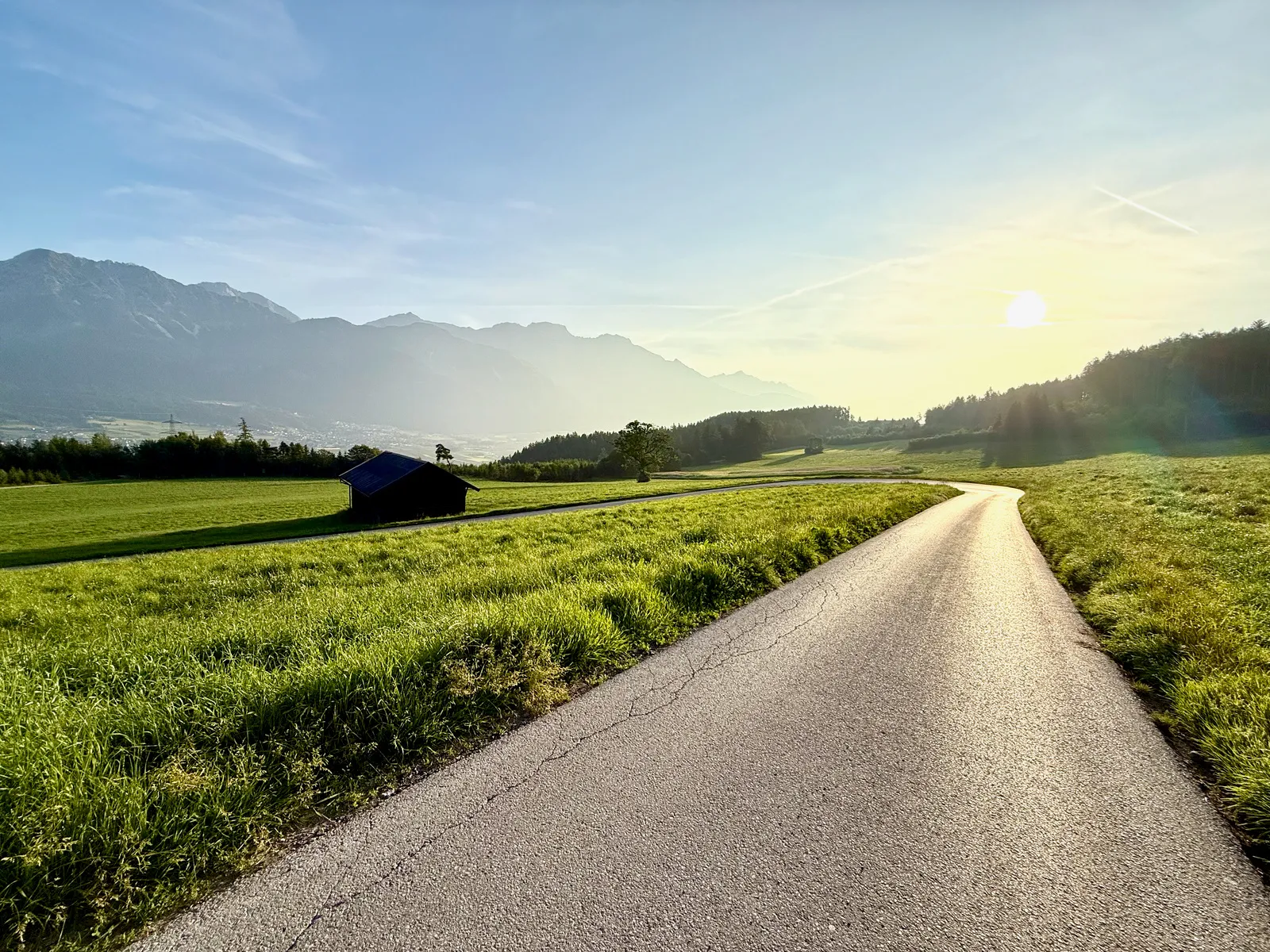
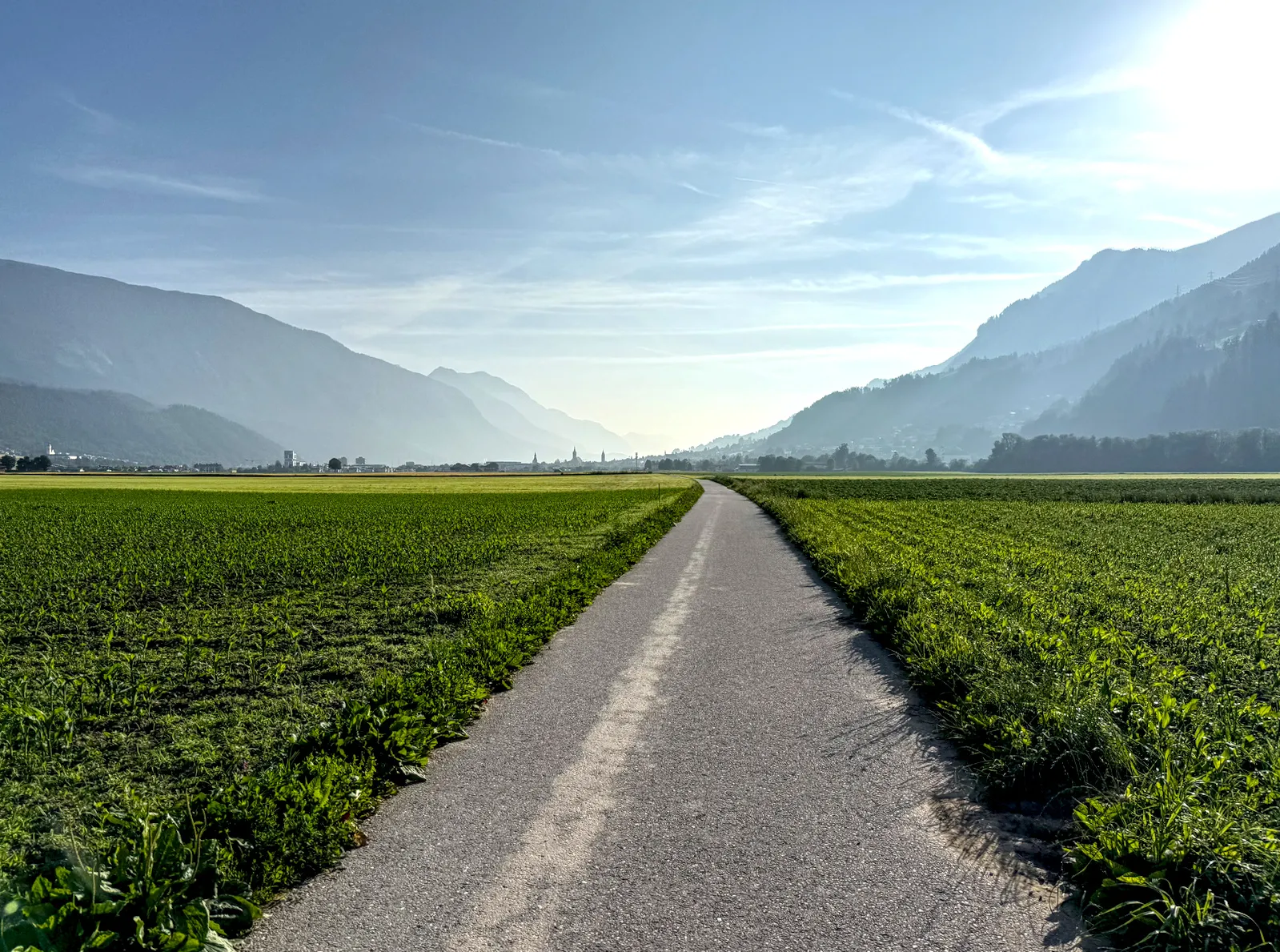
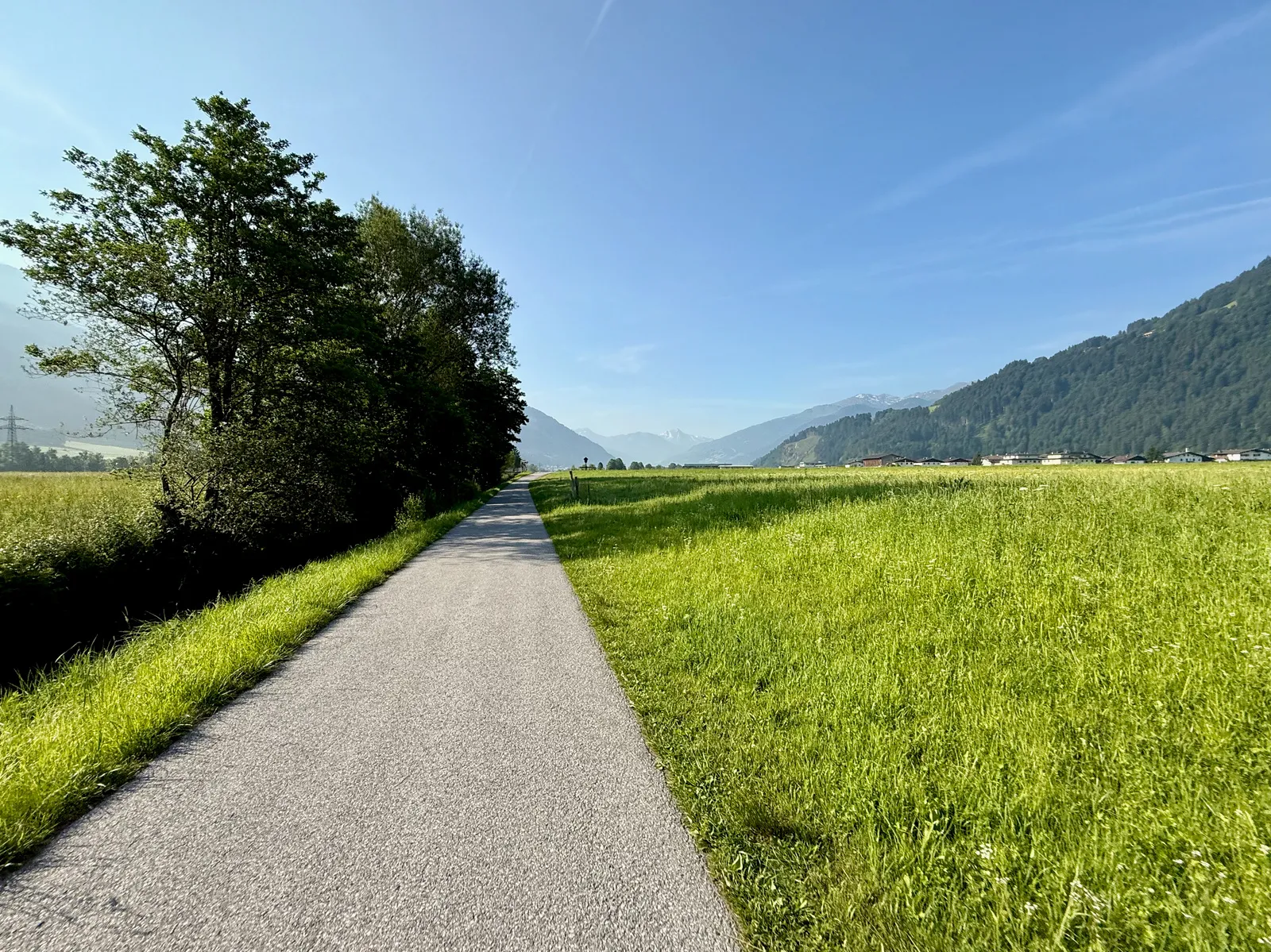
The road I was about to follow — the Zillertaler Höhenstraße — was a later addition to the trip. It’s one of those high-alpine scenic roads: toll-based for motor vehicles, maintained more as a tourist attraction than a means of transport. When I had the rough outline of my route ready, I wasn’t happy with how little climbing I had planned for the first day, especially given the overall distance. Then I spotted a Komoot highlight, accompanied by an alluring series of photos. “I found my elevation!” I thought to myself. It looked steep on the screen, but I figured I’d manage. I always do.
The road to Zirmstadl starts in Kaltenbach, and it shoots up instantly. Less than 500 meters in, it already hits 9%, and it doesn’t ease up for a moment. The next 10 kilometers average a brutal 11.5%. Unsurprisingly, my speed plummeted, and as the sun climbed higher, I started to sweat. After 15 minutes, I took my mitts off. Soon after, I began unzipping my jersey, shyly at first, but it wasn’t long before I had it fully open. Grinding up double-digit gradients, out of the saddle, jersey flapping in the wind — that’s my style!
When the road gets violently steep, I tend to get out of the saddle. Not for power, oh no! Quite the opposite, in fact. Standing up as the front wheel points skyward allows me to significantly drop my cadence. Lower cadence with preserved torque means lower power output. And by assisting the pedal stroke with my body weight, I can generate the same force with less engagement from my leg muscles. I no longer have to painfully force the pedals through the dead spot, rapidly destroying my quads in the process. Instead, I can maintain fairly low power on very steep roads for quite a long time.
Don’t get me wrong — it’s not easy. You still have to generate the power that propels the bike forward. You must balance the bike, dancing with it as you climb. And that dance — a slow waltz on the pedals, and yet a passionate tango that fuses you with your bicycle — is a tricky one to master. Still, once it becomes second nature, it opens a world of possibilities: an endless list of steep climbs, waiting for you to conquer.
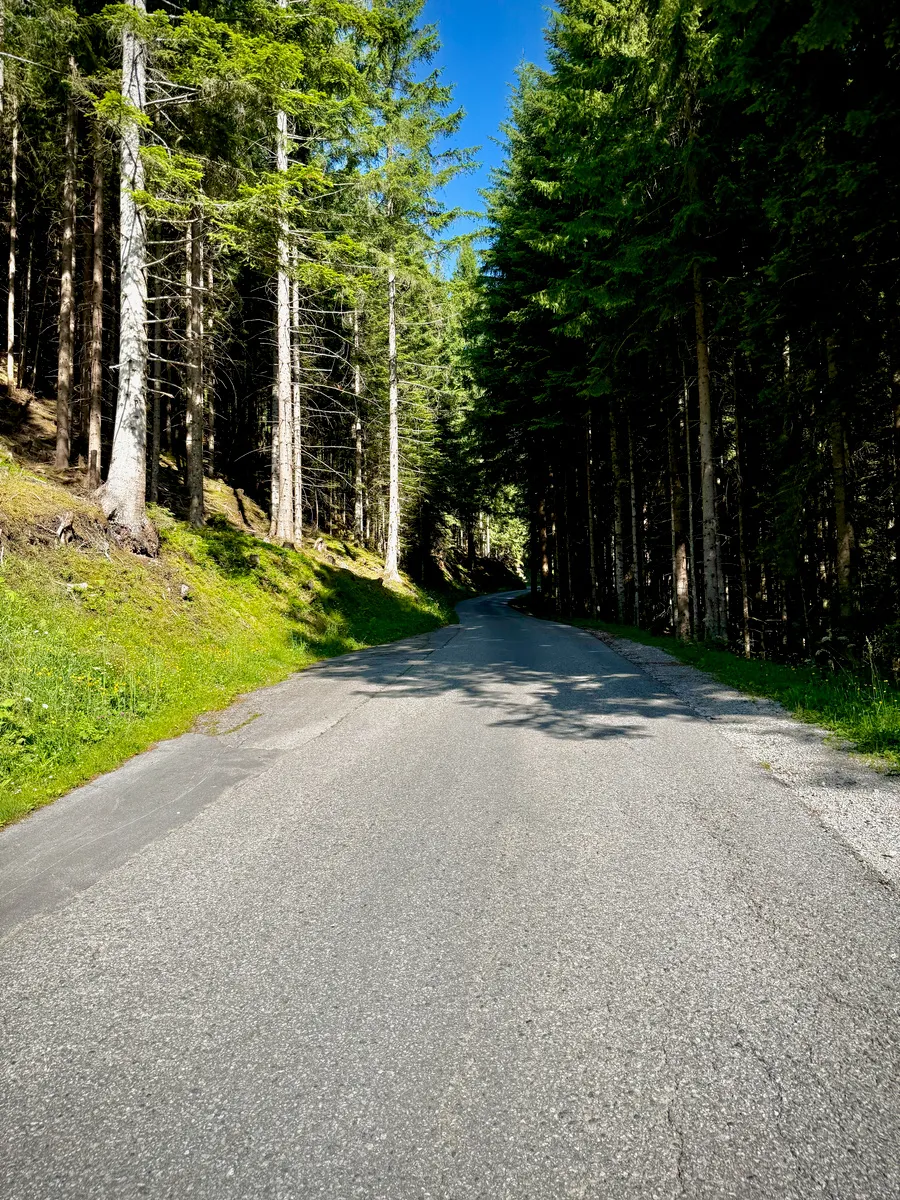
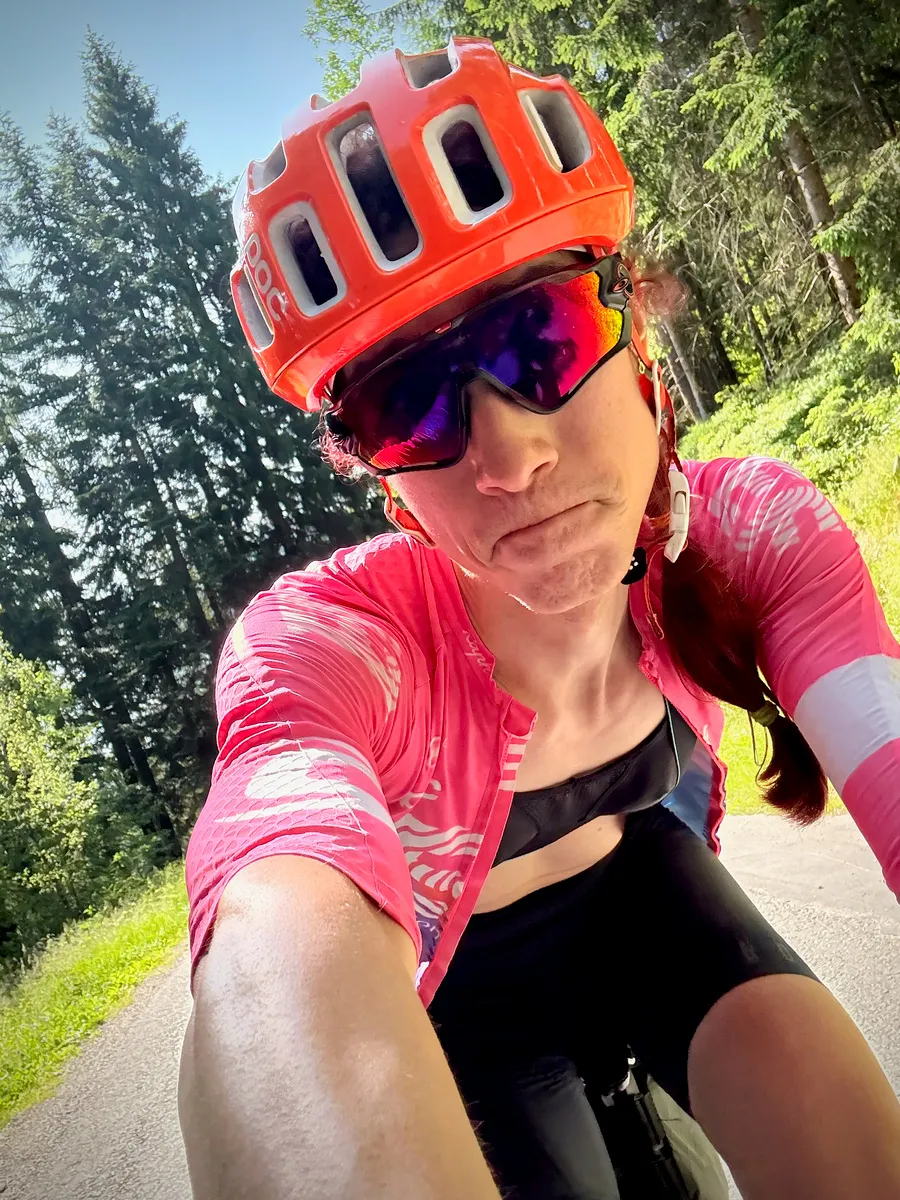
The climb felt neverending — a relentless wall of 11 to 13% ramps, broken only by “resting” sections that still hovered around 9 to 10%. I was moving slowly but gaining elevation fast. From time to time, I glanced at the gradient chart on my head unit, searching for a merciful 7% segment, but found none.
Just a day before I left home, I’d discovered a slightly easier variant of this climb. “Slightly” meaning it was supposed to offer short sections of more forgiving gradients, but just enough to catch a breath. Later that day, I’d realize that this new version had never synced to my Wahoo, leading me straight into the jaws of the steepest possible route.
After about 7 of the 11 kilometers, I decided to take a break. Before the trip, I’d promised myself I wouldn’t give in to the little daemon urging me to ride every climb non-stop. This time, I wanted to take a less “sporty” approach. Pausing occasionally, keeping my legs fresh, and avoiding total muscle breakdown. Still, grinding up an unrelenting wall for an hour wasn’t exactly part of that plan.
I pulled over at a quiet spot. It was around 10:30, and the sun was already high, so I used the pause to apply sunscreen. After about five minutes, my legs began to feel somewhat refreshed. I mounted up again and pushed on, ready to face the next 3.5 kilometers, which averaged a punishing 12%.
As the gradients grew even more intimidating, the reward for the effort finally revealed itself. I was nearing the upper edge of the forest. With the trees thinning out, a wide panorama opened before me, unobstructed and spectacular. Up to this point, I had only been passed by a few cars, but now I began overtaking mountain bikers. Still, not a single roadie in sight.
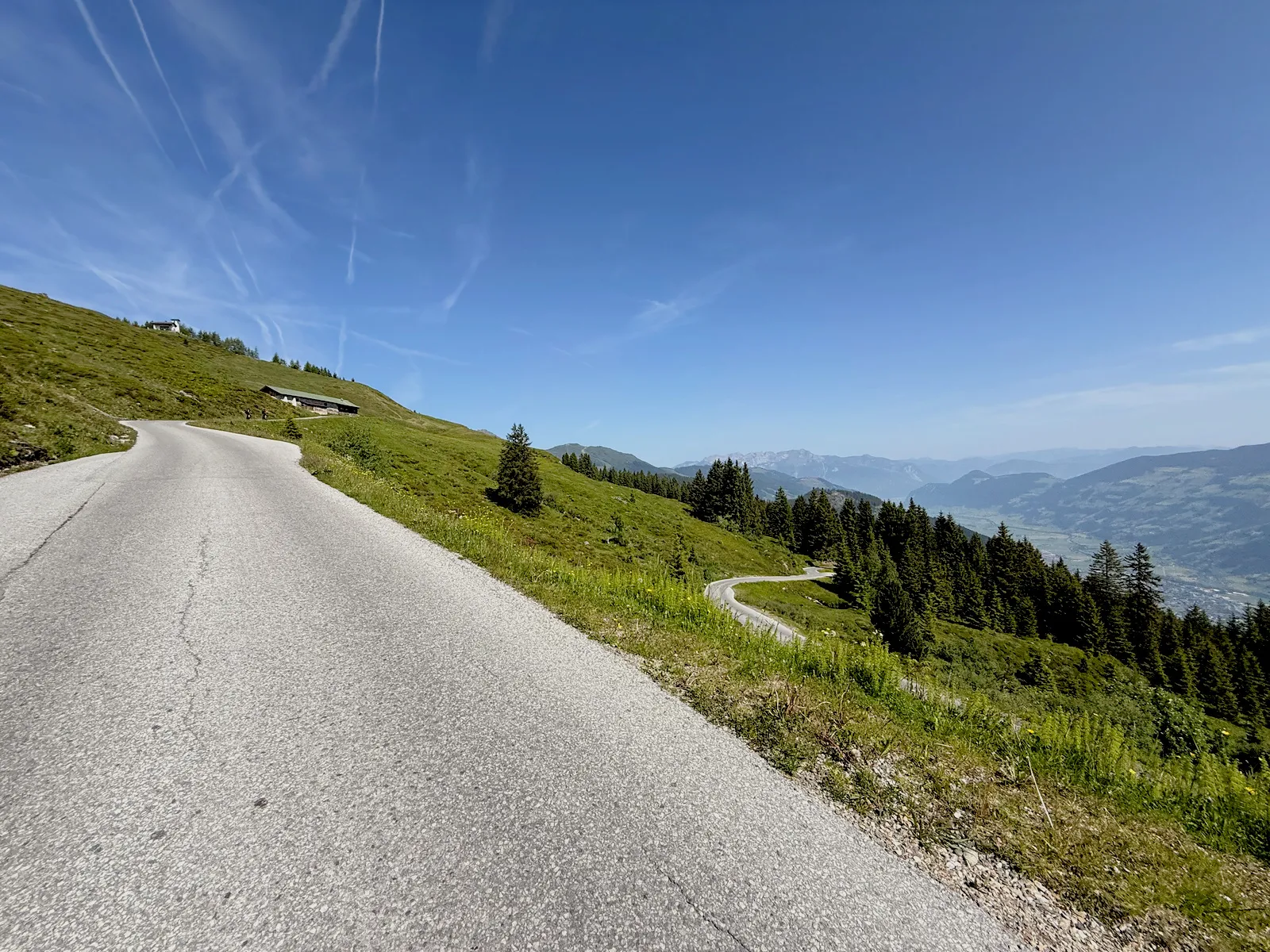
Soon, I reached the highest point of this section of the climb, and the brutal gradients began to ease. I stopped at a “view window” to soak it in, took a few photos, caught my breath, and rolled into a short descent toward the second part of the Hochstraße. The surface wasn’t perfect, but good enough to let me catch up with a couple of sports cars. To my surprise, the drivers kindly let me pass — something I rarely experience on my local roads.
As usual, the downhill didn’t last long. The narrow road pointed skyward again, and with it, my troubles began. I had managed to keep my power output low on the earlier part of the climb. But even with the help of body weight, low-cadence climbing takes its toll. The effort doesn't feel like exhaustion — it's not your lungs or your energy levels — it’s that deep, slow burn in the muscles. Every time I tried to stand up, my legs lit up in protest.
So I shifted to my second-best strategy: the snake route. Zigzagging gently across the narrow road, I kept moving forward, occasionally pausing for a few seconds to relieve the tension. But the distant sight of the high Alps, looming with quiet majesty, pulled me onward.
This was undoubtedly the more scenic stretch of the road. It wound through open terrain, with meadows and pastures unfolding on either side. It climbed steadily toward the high point at around 2,010 meters above sea level. A few short descents and flatter sections offered welcome moments of relief. The traffic had thinned compared to earlier, but so had the pavement quality; the surface was rougher, more weathered.
Ahead of me, nestled among the rolling hills, I could make out a faint ribbon of road carving across the slope, a fine line etched into the landscape. It was the kind of view that made every pedal stroke worth it. Another hidden gem, uncovered in hours of losing myself in pixels of digital maps and the glowing red dots of Komoot highlights.
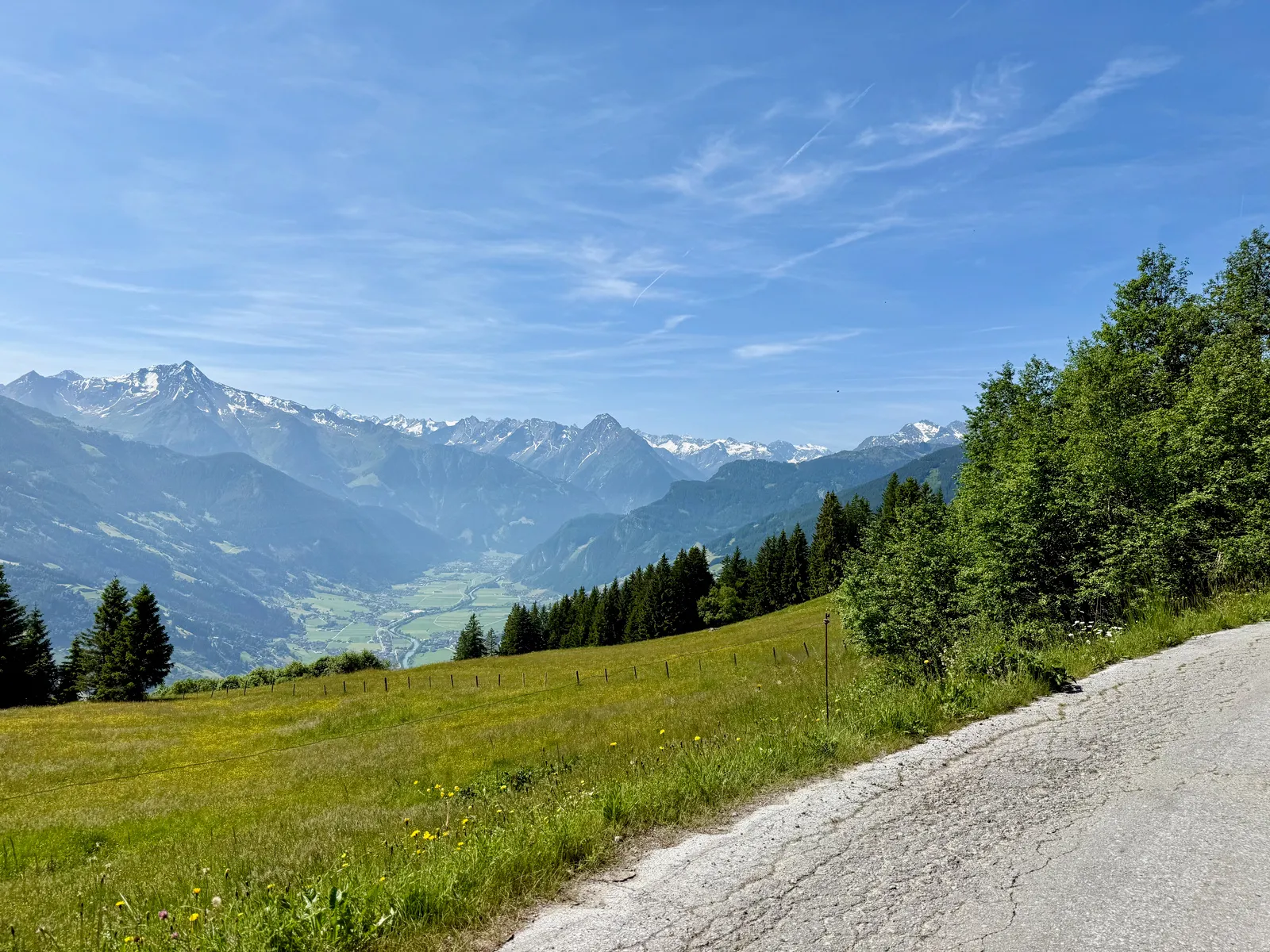
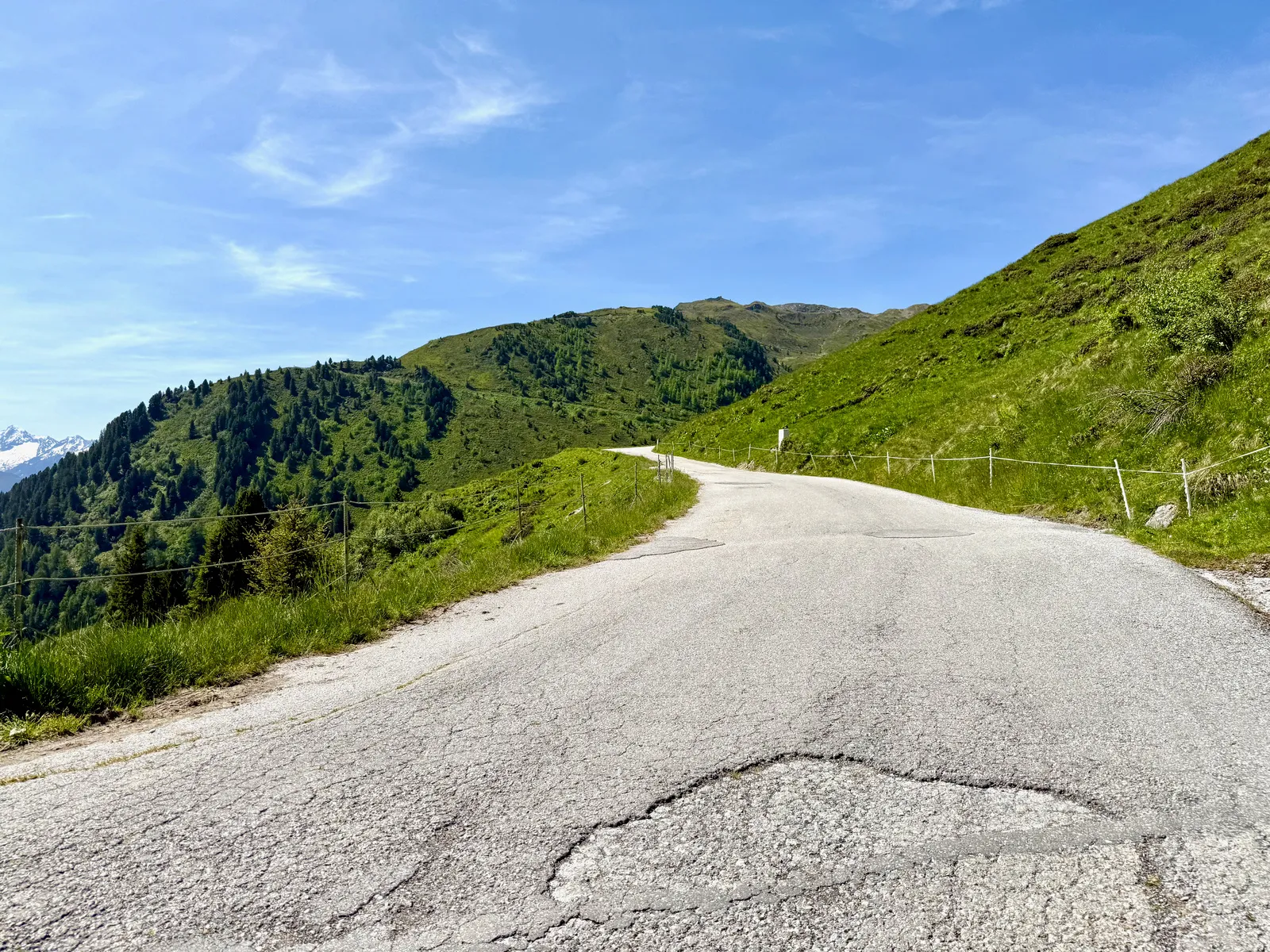
Seeing the road ahead can be a source of strength, or a whisper of vulnerability. It’s one thing to look at orange and red arrows on a map, or a jagged elevation profile. But it’s another thing entirely to lay eyes on the actual road stretching out before you: steep, distant, and seemingly unconquerable. You’re already hurting, your legs aching from the climb so far, and now you’re staring at that fine line etched high above, wondering how you’ll ever make it.
And yet, something stirs inside you. A part of you refuses to back down. A fighter whispers, “I will not be defeated today.” A curious mind wonders, “What’s behind that bend? What lies beyond that ridge?” And the adventurer in you simply says, “If not now, when?”
So you push on. Meter by meter, you leave the road behind. You tick off the elevation, closing the gap between where you are and where you’re going. And when you reach the crest, the mountain yields. You haven’t just won against the climb. You’ve won against doubt, against fatigue, against the limits you once believed defined you.
Just before reaching the top, I pulled over to the side of the road, almost hugging the bushes, to let two tour buses squeeze by. Bold and daring, considering the width and steepness of this narrow mountain lane. A few minutes later, I was rewarded with a stunning panorama of the Zillertal Alps. Despite the buzz of tourists and gliders overhead, the place radiated an idyllic calm. I stopped for a moment, unable to take my eyes off the towering peaks at the far end of the valley.
But time, as always, pressed on. After a brief pause, I rolled into the descent. It wasn’t a particularly fast one — the road surface left much to be desired, riddled with cracks, potholes, and harsh switchbacks. I kept my speed in check, more cautious than usual. Near the bottom, I caught up with a truck, and with the road so narrow, visibility poor, and the occasional oncoming car, I had no choice but to trail behind, brakes softly dragging all the way to the valley floor.
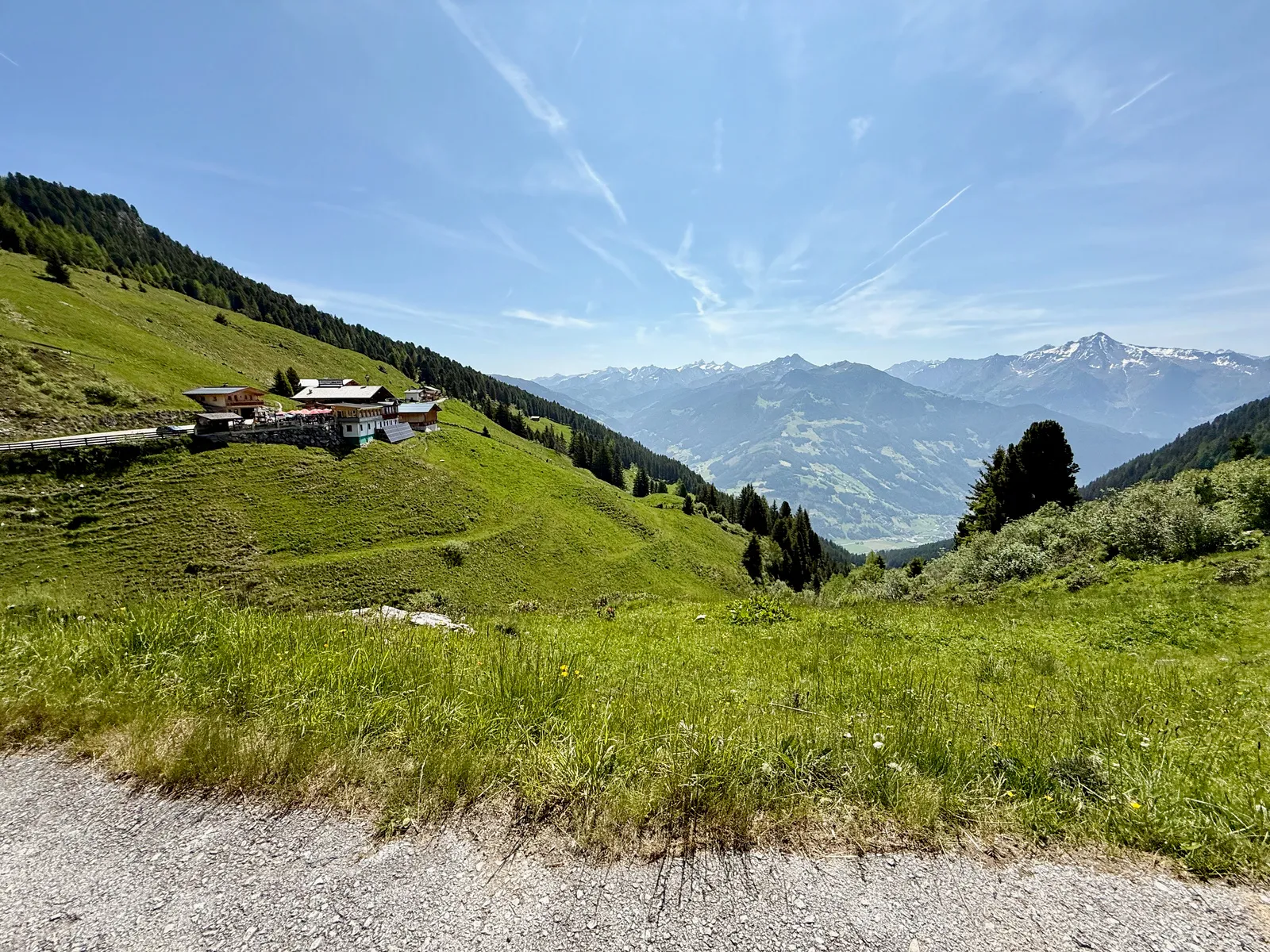
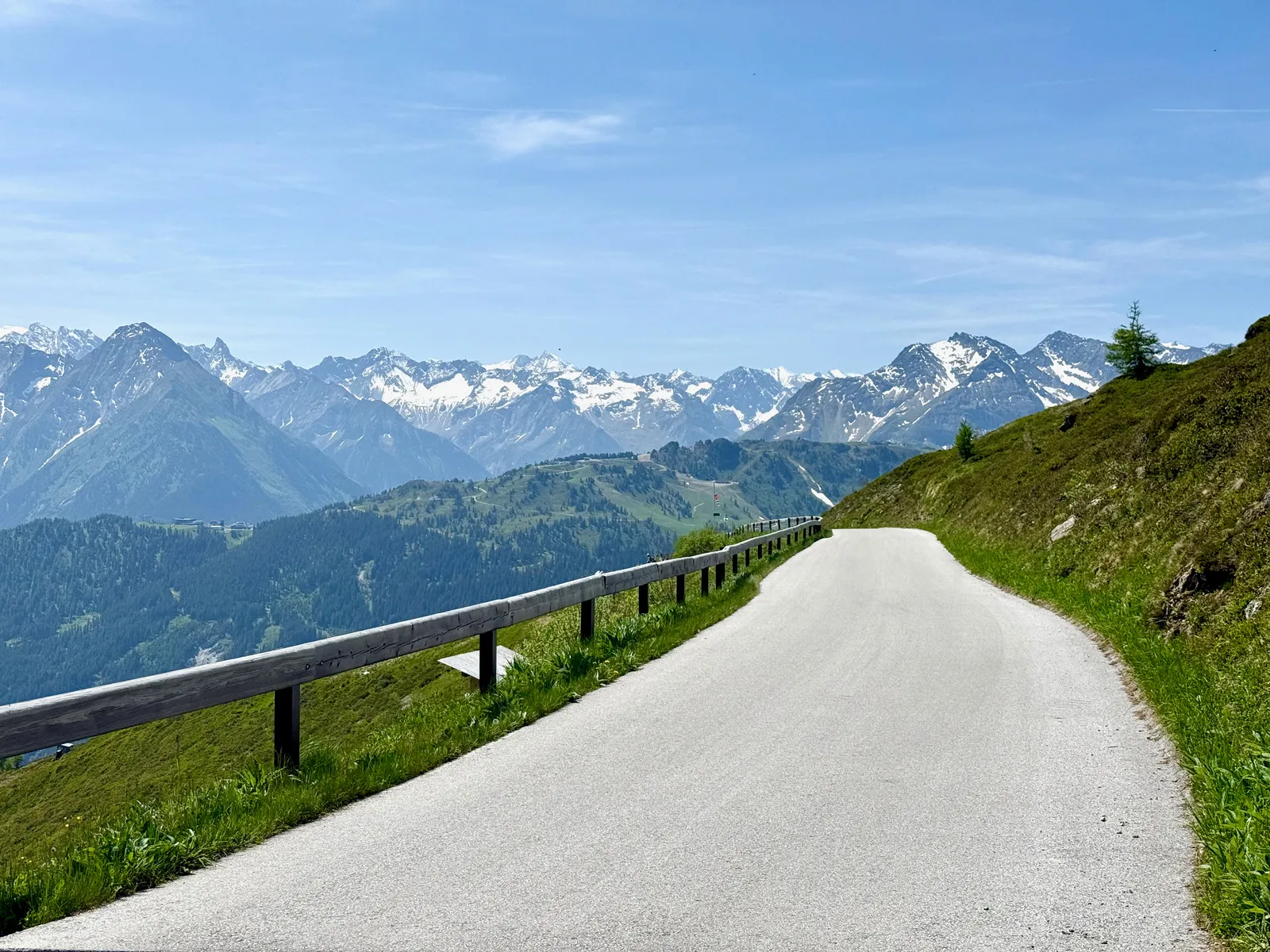
Half an hour later, I rolled into Zell am Ziller. With only 60 kilometers left and the whole afternoon ahead of me, I decided to stop and unwind. My bottles were freshly filled from a roadside fountain, so I found a small café, ordered a coffee and a non-alcoholic beer, and let myself relax into the atmosphere of the town. The temperature had climbed close to 30°C. My type of weather!
After my break, I got back on the bike and headed toward Gerlos. The long morning of quiet lanes and hidden tracks was behind me; now I was entering a stretch on the main road. The traffic was moderate, with cars and trucks pushing forward toward their destinations. Still, the driving culture here was leagues above what I’m used to in Poland — no close passes, no reckless squeezing. It made all the difference.
The road began climbing almost immediately. One benefit of riding a main road is that the gradients are typically more forgiving. A steady 7% ascent unfolded through a series of serpentines carved into the open valley wall. In contrast to the brutal climb earlier in the day, I quickly found a comfortable rhythm here, as the terrain allowed for a decent cadence, sparing my legs from the burning strain of low-RPM grinding.
With the sun rising higher and temperatures climbing, I opened my jersey fully once again, letting the flaps dance gently in the breeze that offered a welcome bit of cooling. The open fields and scattered houses soon gave way to sparse forest, where tall trees cast patches of shade across the tarmac.
I passed through the small village of Gmünd in no time, and shortly after, I reached Gerlos, a picturesque ski town, peaceful in its off-season slumber. I stopped briefly at a fountain to refill my bottles. Aside from a few people lounging on a café terrace, the place felt almost deserted.
I continued on, approaching the final substantial climb of the day. The road led me to the base of a dam and then up toward the crest of the Gerlospass. I took another short break, soaking in the views and laughing as a group of stubborn cattle blocked the road in front of me. And then, with the last major climb behind me, I dropped into the descent, speeding down toward the valley below.
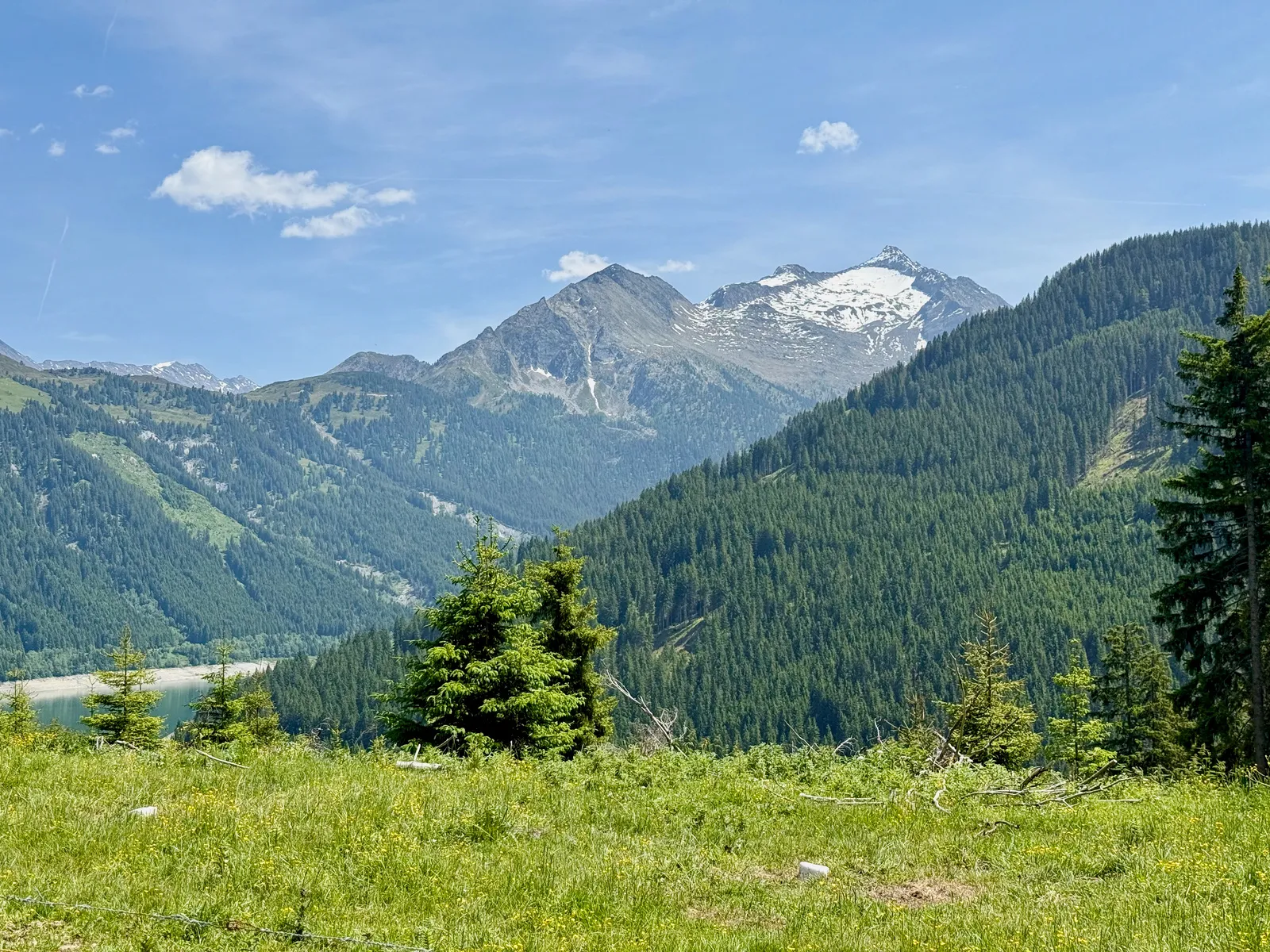
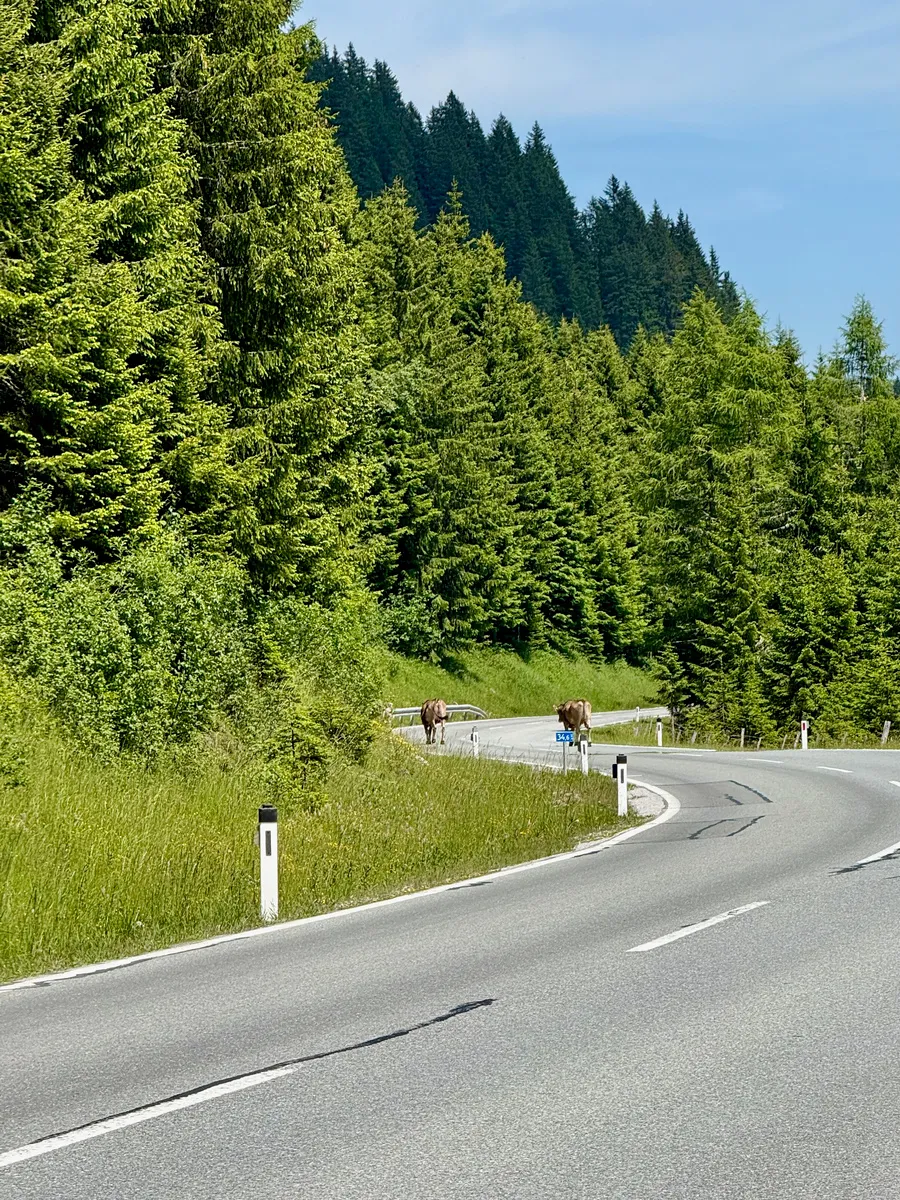
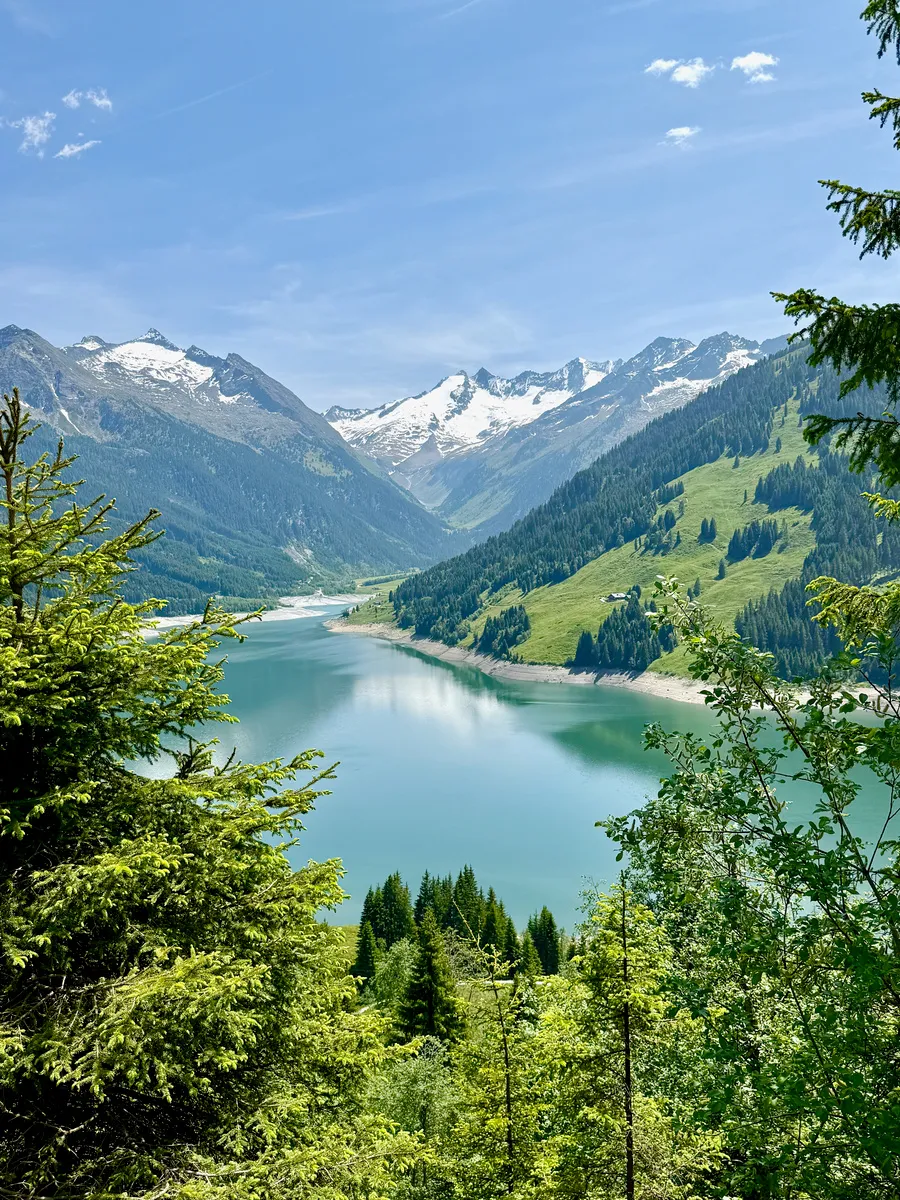
Once again, instead of following the main road, I opted for a tiny side route. I knew the descent would be slower — no long, sweeping turns like on a transit road. But I didn’t care. So far, every detour off the beaten path had turned out to be a tiny gem. Experiences over speed, that was the deal.
The road was steep, narrow, and twisty, its surface riddled with cracks, rough patches, and uneven tarmac. Another careful descent, but thanks to my experience and good control of the bike, I could let off the brakes every now and then and enjoy the ride. I was briefly stunned by the confidence, and questionable judgment, of a fire department minibus that overtook me. They must have known every dip and creak in that road, but it still didn’t strike me as safe.
Then, suddenly, I heard a muffled buzzing sound, and felt a sudden, sharp, painful pinprick in my forehead. Bee. “Great,” I thought, “it’s only the first day and I’m going to end up in the ER.” I grabbed the brakes hard and stopped. Off came the helmet, faster than ever before, as I frantically combed through my hair, but found nothing. No bee, no sting, just a fading ache. “Maybe it wasn’t a bee after all? Maybe just the impact that felt like a sting?” I couldn’t be sure. Either way, there wasn’t much I could do at that point. Better to get to the valley quickly. I had no history of allergies outside of pollen, but I paid close attention to my body: was I feeling lightheaded? Was the pain spreading? No. Just a dull ache. I continued, descending carefully toward Wald im Pinzgau.
From there, I had about 25 kilometers of mostly flat road along the valley floor. I joined the Tauernradweg, a mix of small roads and dedicated cycle path. The route initially followed the local rail line connecting Zell am See with Krimml, before veering across the river. I rode unhurriedly — I had time to spare. And of course, I was tired. After the dramatic climbs and scenery of earlier, these final 25 kilometers, though beautiful, felt a bit mundane. The day was settling into a quiet rhythm.
At last, I rolled into Mittersill. I found a cozy restaurant on the town square and ordered a pizza, then did a bit of shopping for the evening and the next day’s ride. With 170 kilometers on the Wahoo, I arrived at my accommodation. Shower, laundry (pro tip: if you’re bikepacking with booked rooms, wring your clothes out into a towel — it works wonders), and finally… rest. The first day was done. An epic one. And tomorrow, the road would rise again.
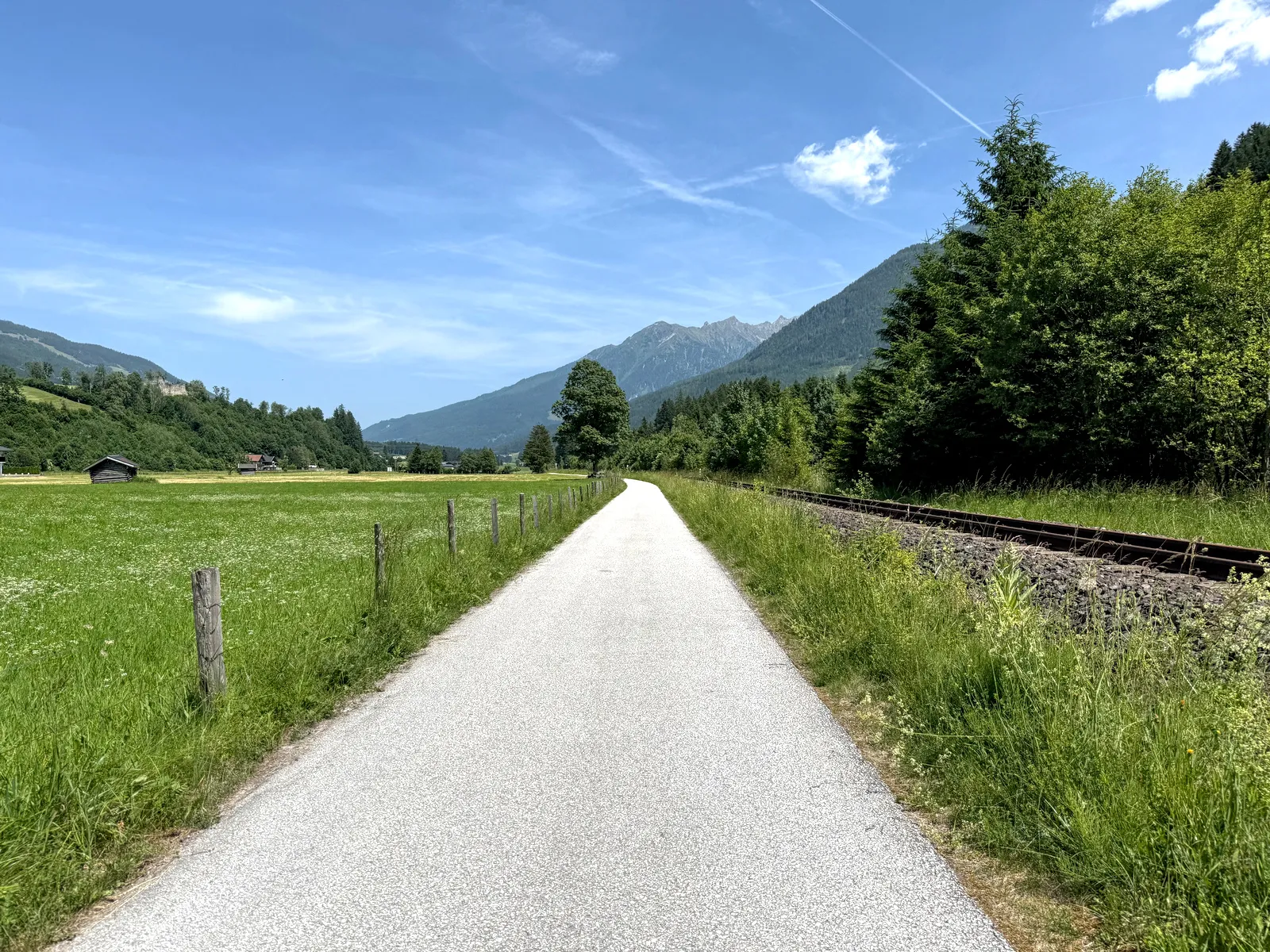
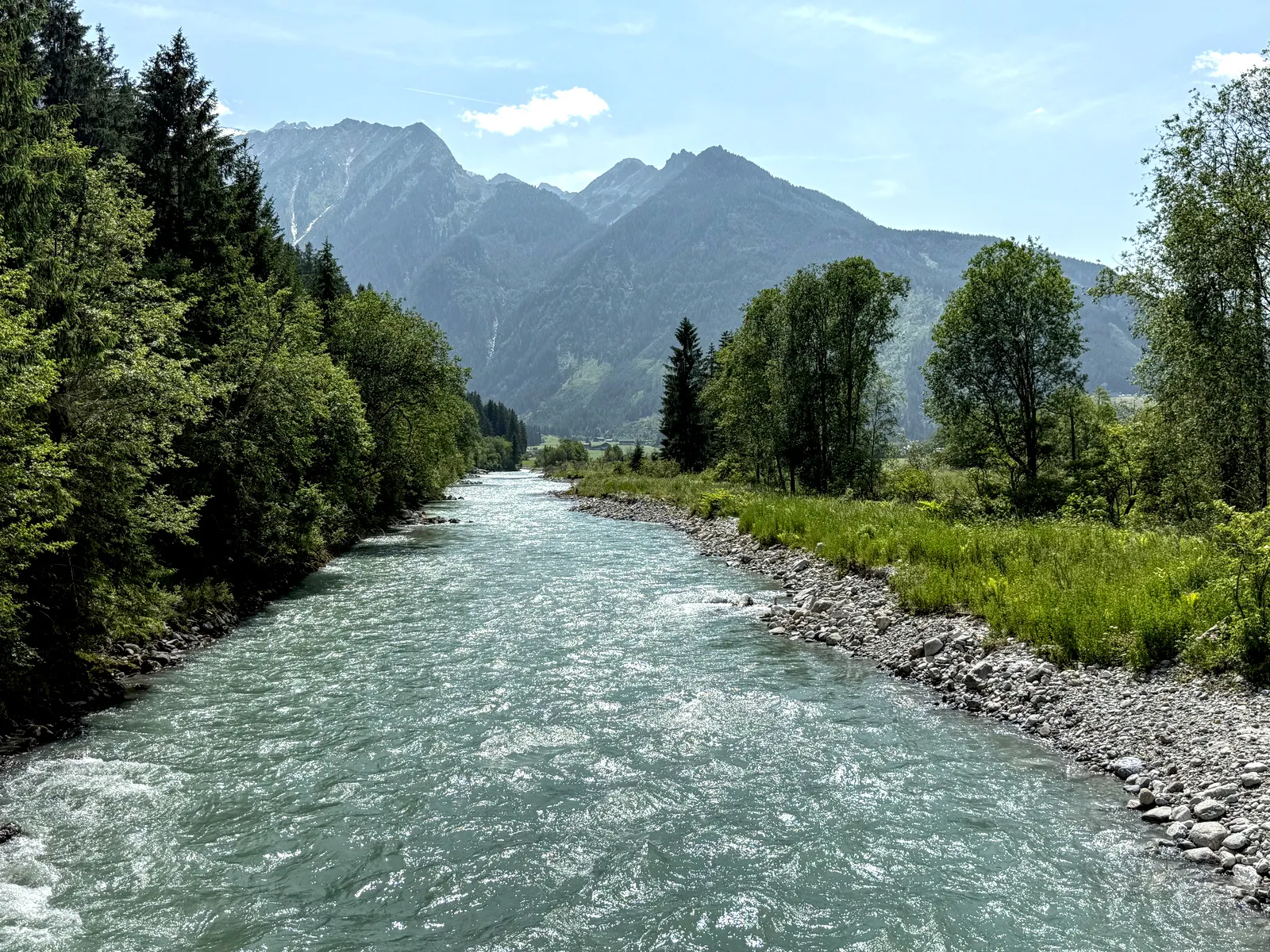
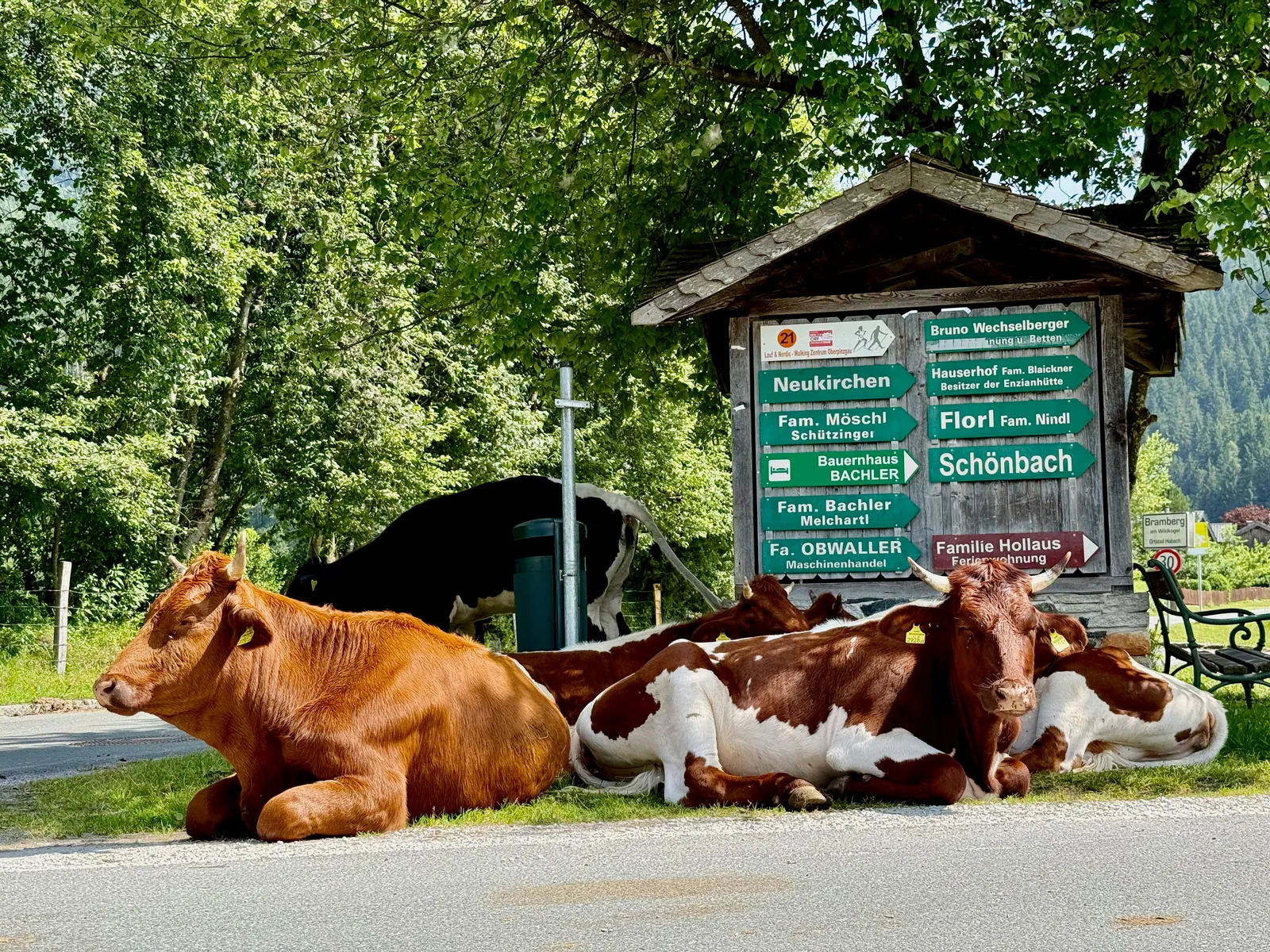
Day 2 - Mittersill to Spittal an der Drau
I woke up early — too early for me — and got ready quickly, aiming to set off right after breakfast. The day before I negotiated she'd prepare breakfast for me an hour earlier than usually, so I had hard motivation to get up. Also, showers were forecast for late afternoon around Spittal an der Drau, my planned destination. And with my deep, instinctive hatred of riding in the rain, I was determined to avoid them at all costs.
The main dish for the day, the reason I came here in the first place, was the Großglockner Hochalpenstraße. But before I could get to that legendary road, I had to reach Fusch. For the most part, I retraced the same bike trail I’d followed the previous afternoon. Quiet roads, a valley slowly waking up to the day, and the soft light of the early sun combined into a perfect warm-up. The morning roll through that flat section was calm, pleasant, and almost meditative.
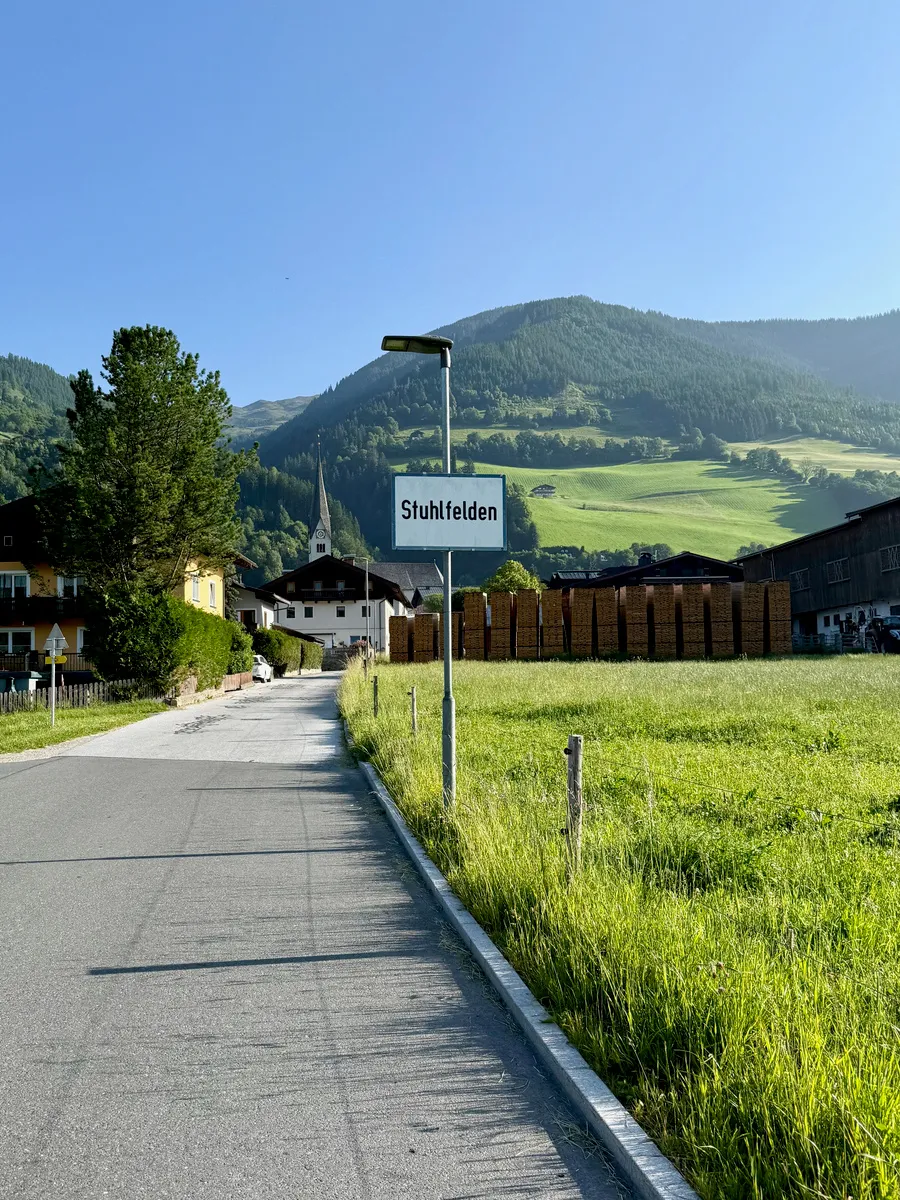
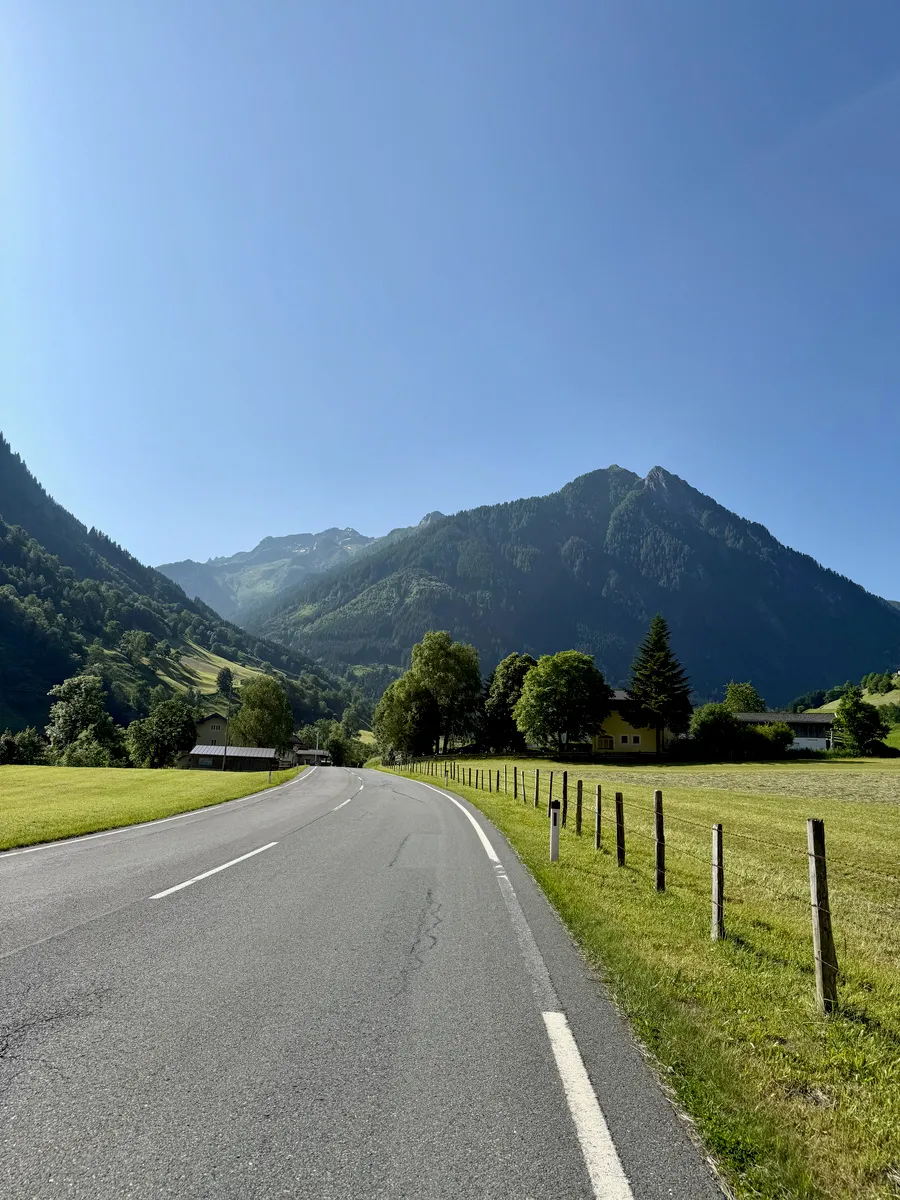
After about 30 kilometers, I reached Bruck, where I turned right into the valley that leads toward the Großglockner. The road started to gently tilt upward, but still firmly in the territory of “flat.” I reached Fusch fairly quickly, already dreaming of coffee and a pastry. Spotting a gas station by the roadside, I pulled in, but quickly realized it didn’t offer any decent brew, nor anything sweet to go with it. A quick recalculation later, I shoved a fistful of gummy bears into my mouth and pushed on.
Not much further along, the bike path merged with the main road and the real climbing began. One spin after another, I settled into a rhythmic, mid-tempo effort, mostly guided by feel, occasionally glancing at my power numbers. Here and there, gaps in the trees offered early glimpses of the mountains ahead, still distant, still a bit shy behind the morning haze. The valley briefly opened into meadows before the road widened dramatically, revealing seven broad lanes and a set of toll gates tucked just behind a curve.
Up to the toll station, the climb hadn’t been too demanding. A gentle increase in gradient, peaking around 11%, gave me confidence: despite the fatigue from the day before, my legs still had something to give. I rolled past the cyclist’s gate and began the main ascent, moving steadily through a large group of riders. From that point on, the slope didn’t ease — 9 to 10% gradients, averaging nearly 10% for the next 14.5 kilometers, all the way to the top of Edelweißspitze.
I kept patient. The road began to unfold more dramatically now, with each turn and rise revealing new heights and deeper views. With every meter climbed, the scenery became more majestic, more alpine. This was it, the main course.
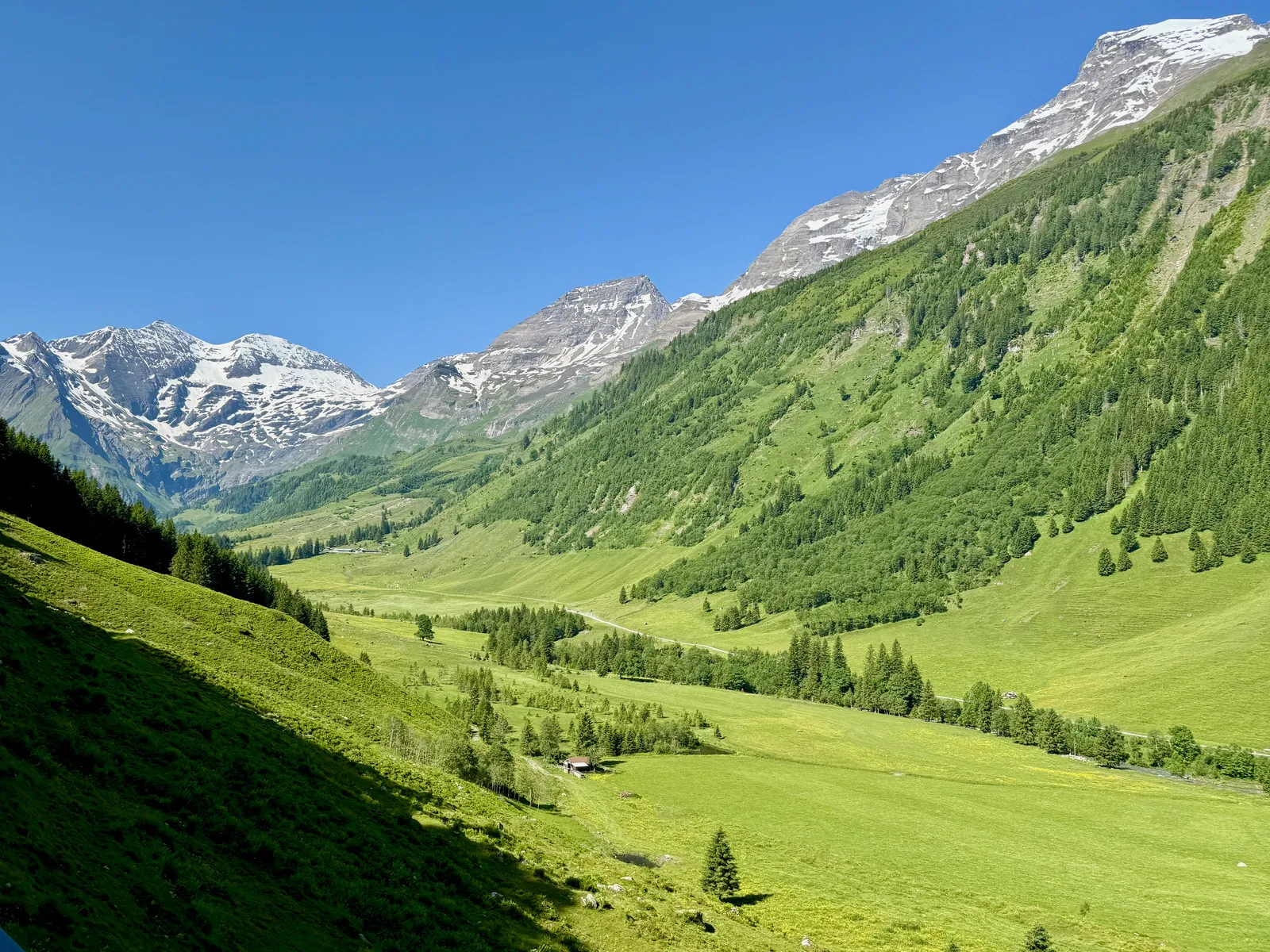
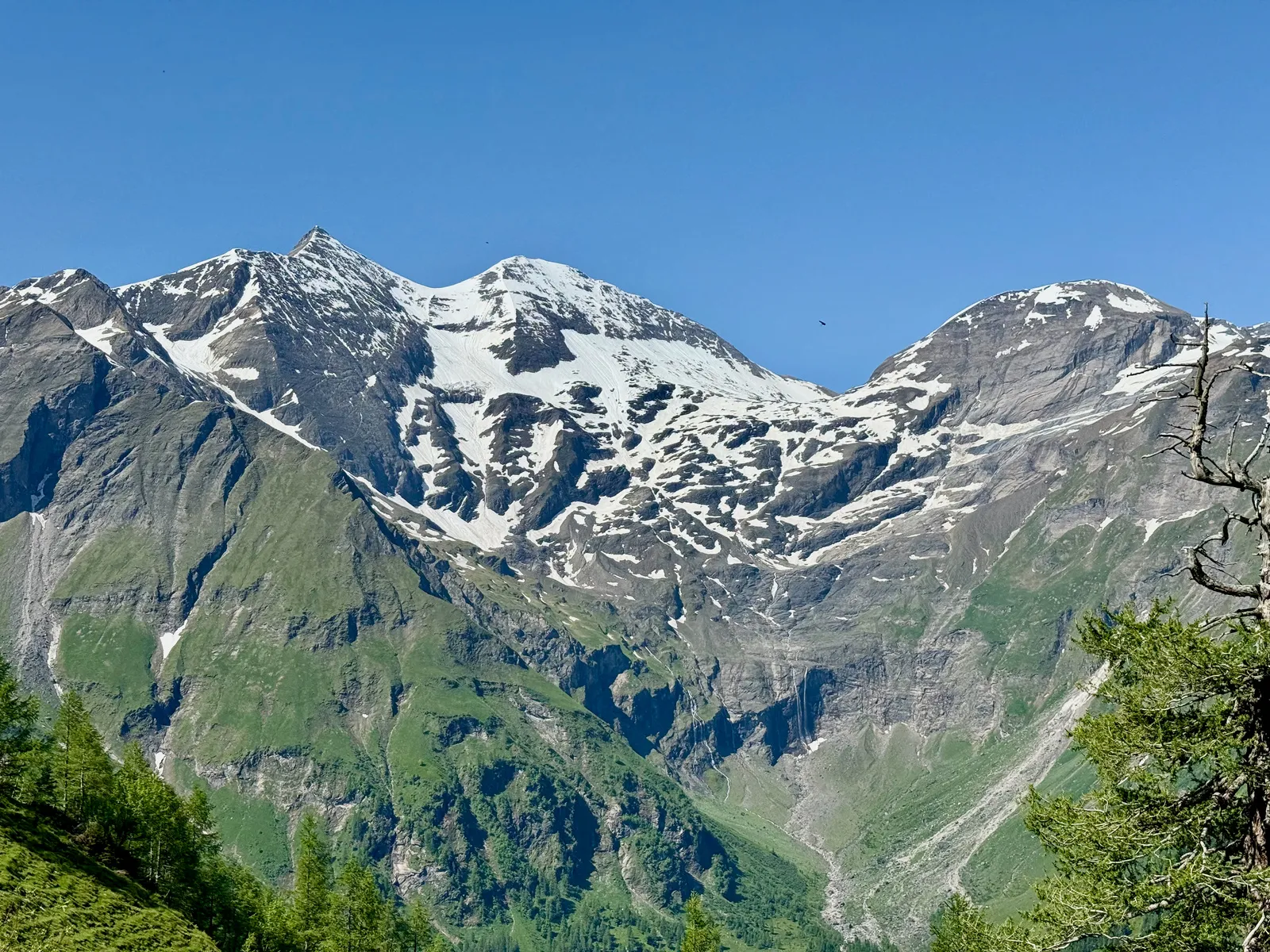
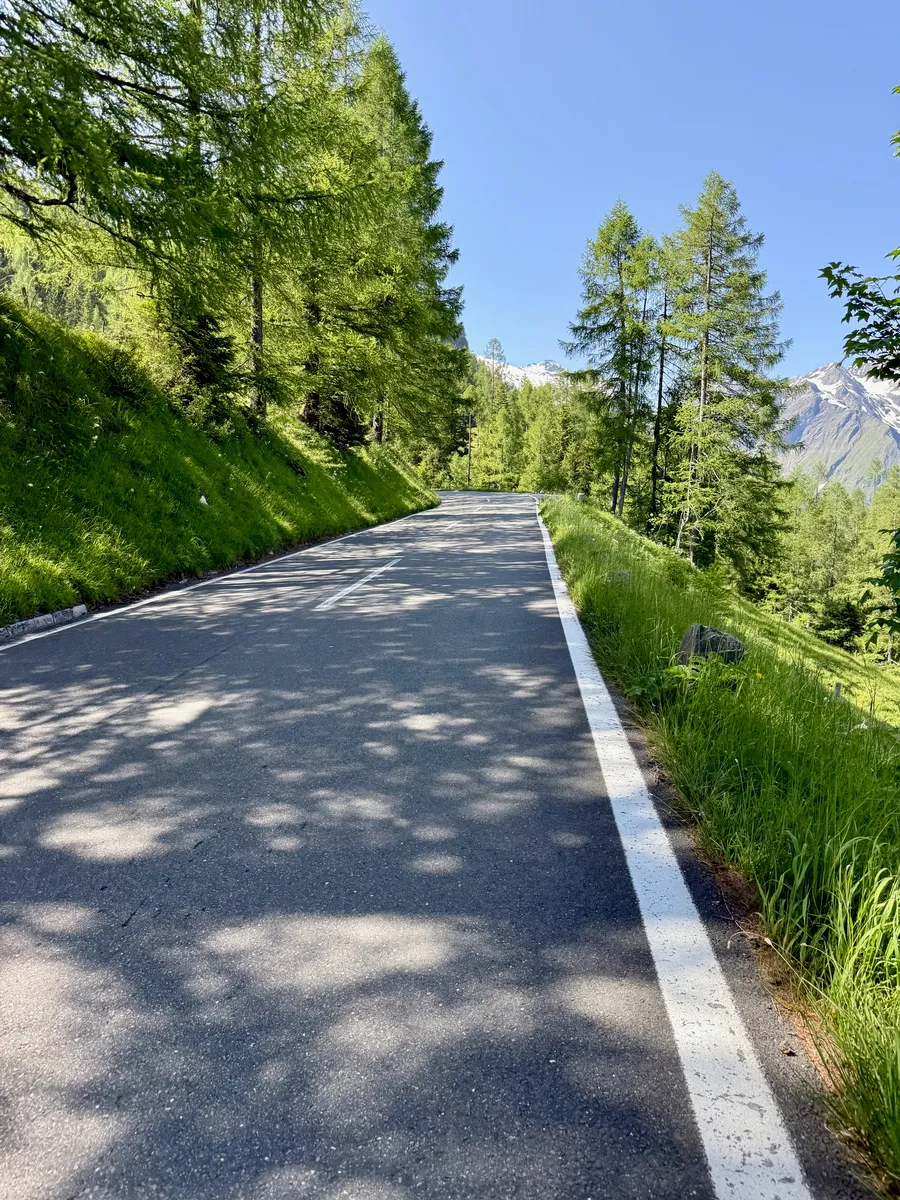
Soon I reached the first series of switchbacks. The road here is wide, engineered for high-speed sports cars and motorcycles, so each hairpin came with a brief, flatter section that allowed for a few relaxed pedal strokes. With every change in direction, the scenery shifted, offering fresh angles on the towering peaks and the deep valley below. I soaked it all in, letting the views help pull me upward.
At one point, I passed an informational board along the roadside, messaging about environmental protection, urging tourists to stay on designated paths. It featured bees, reminding readers that “every square meter of greenery counts as our home.” It left a bitter taste. Here we are, carving a road through pristine alpine landscape, turning it into one of the country’s busiest tourist magnets, with over 300,000 cars a year spewing exhaust, and we put up a few gentle signs asking people not to step on the flowers.
Meanwhile, I was gaining altitude. Every so often, signs displayed the current elevation, giving me a tangible sense of progress. Still, fatigue was creeping in. Despite riding at a conservative pace, I could feel the effects of poor sleep two nights earlier, and the brutal gradients of the Zillertaler Höhenstraße were still echoing in my legs. I kept eating gummy worms from the food pouch, one after another, but you can’t simply replenish nearly 4000 burned calories overnight.
As I climbed higher, the trees grew thinner, eventually giving way to low shrubs and alpine grasses. The thinning vegetation opened up uninterrupted views of the surrounding peaks, which now rose dramatically around me. After about 1000 meters of elevation gain and nearly 80 minutes of non-stop climbing, I pulled over for a short break. I got off the bike, took a deep breath of air. It was partially alpine crispness, partially engine fumes. I stared out across the mountains, and a moment later, I clipped back in and continued upward.
Of course my legs hurt. Sometimes, to others, it might seem like, “She’s so light, so strong, she climbs so effortlessly!” But that’s far from the whole story. As much as I love climbing — the challenge, the rhythm, the feeling of slipping into that focused “zone”, it rarely feels easy. I wrestle with my thoughts, with my legs. Despite my lightness, gravity still demands to be fought. And even with 1:1 road gearing, a steady, unrelenting 10% gradient takes its toll, especially if you’re a spinner like me.
All the way up, I passed some riders and was passed by a few. Most cyclists on these slopes seemed to fall into two categories: tourers and bikepackers, or roadies. The tourers generally spun up lazily, appearing to enjoy every second of their adventure. The roadies, on the other hand, all seemed deep in their pain cave, whether they were faster or slower than I was.
As for me? I was enjoying every second of the pain I was inflicting on myself.
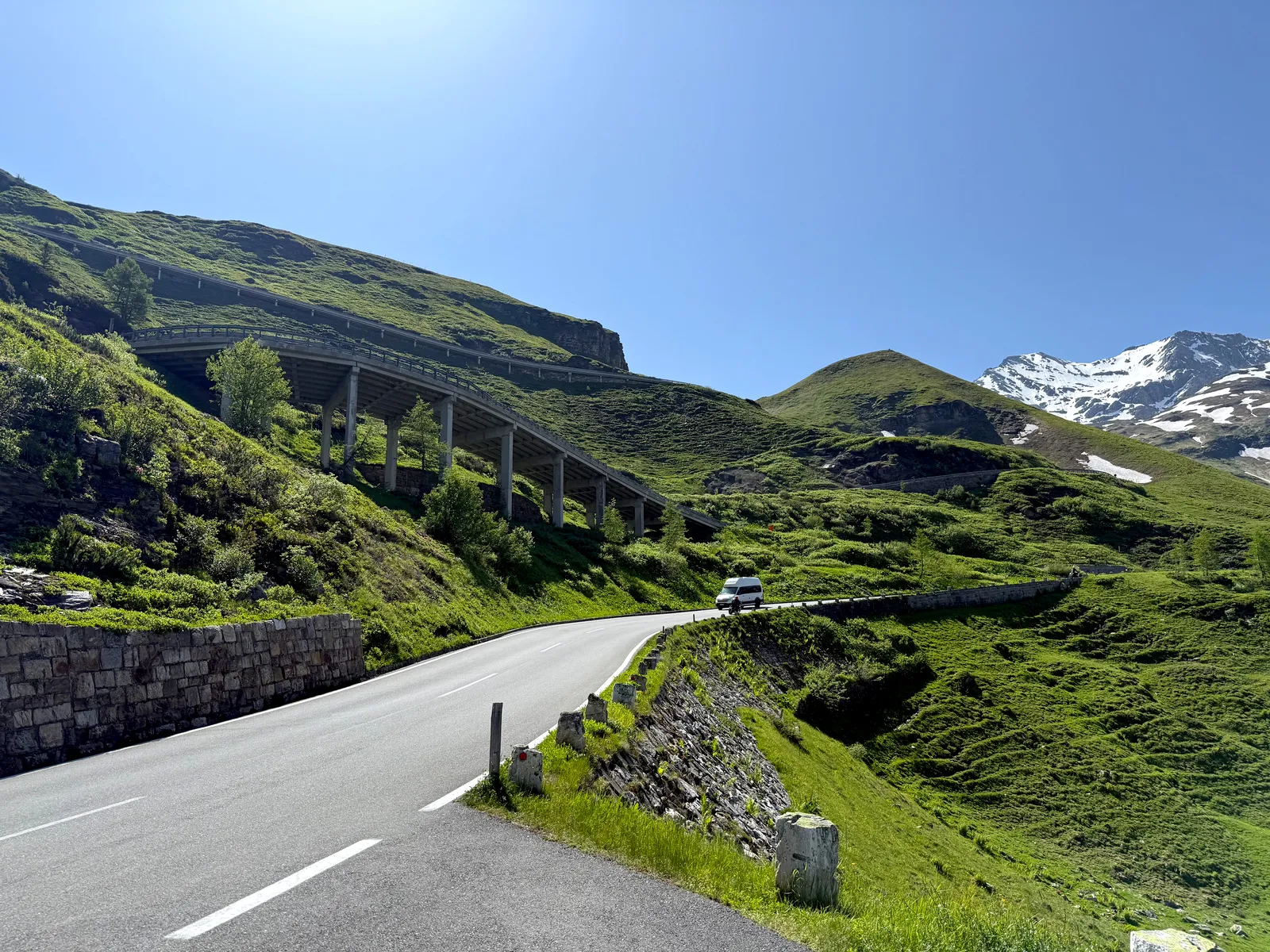
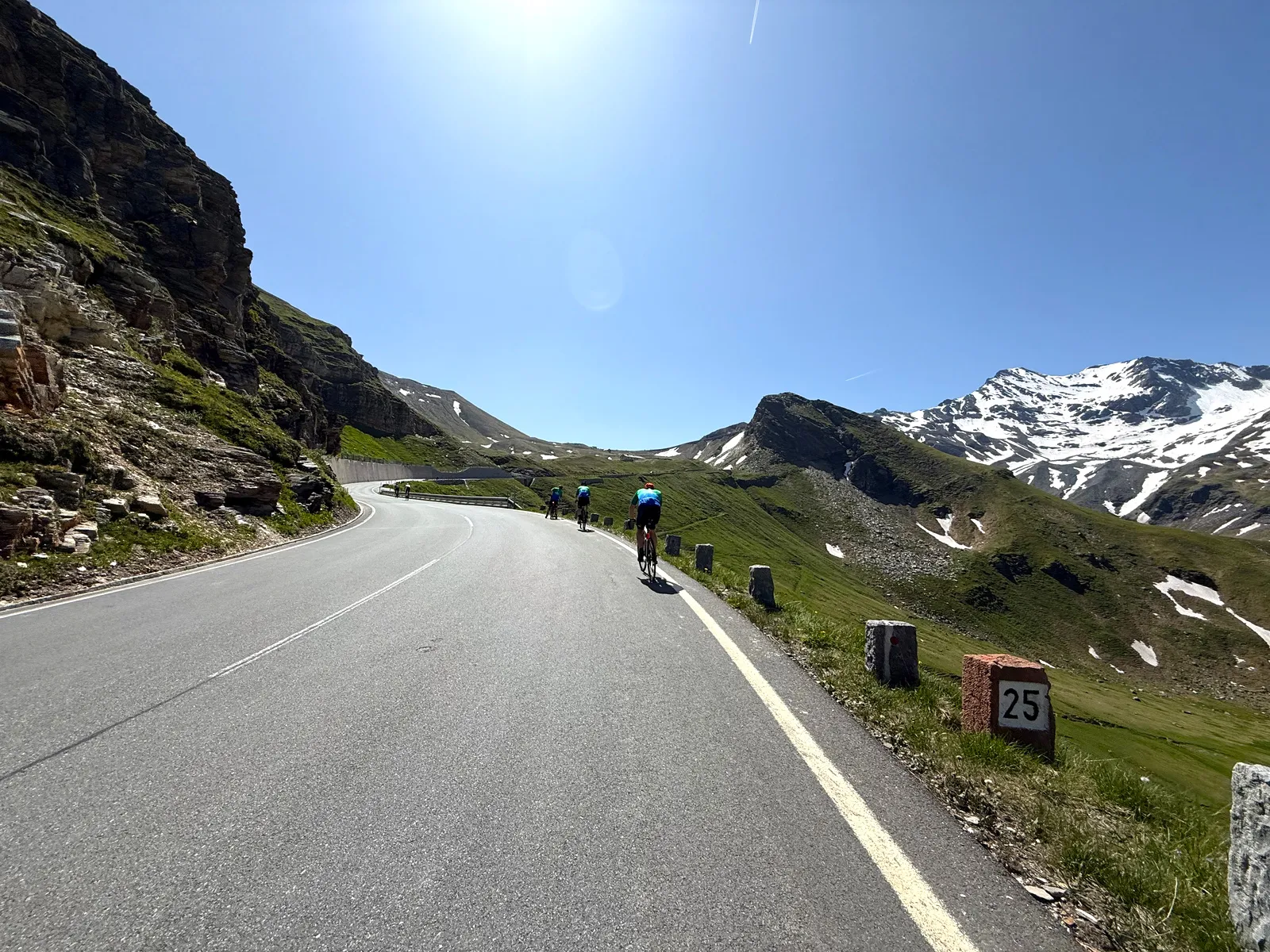
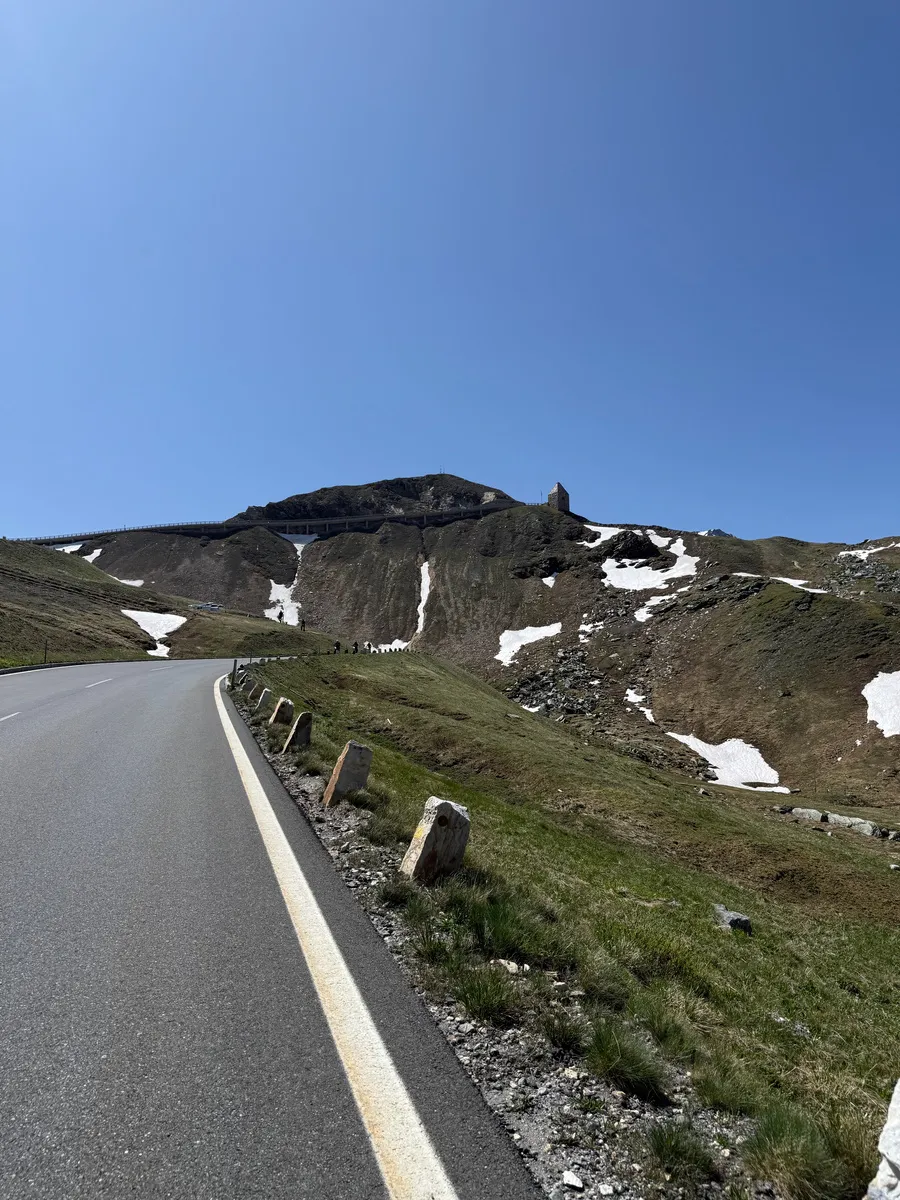
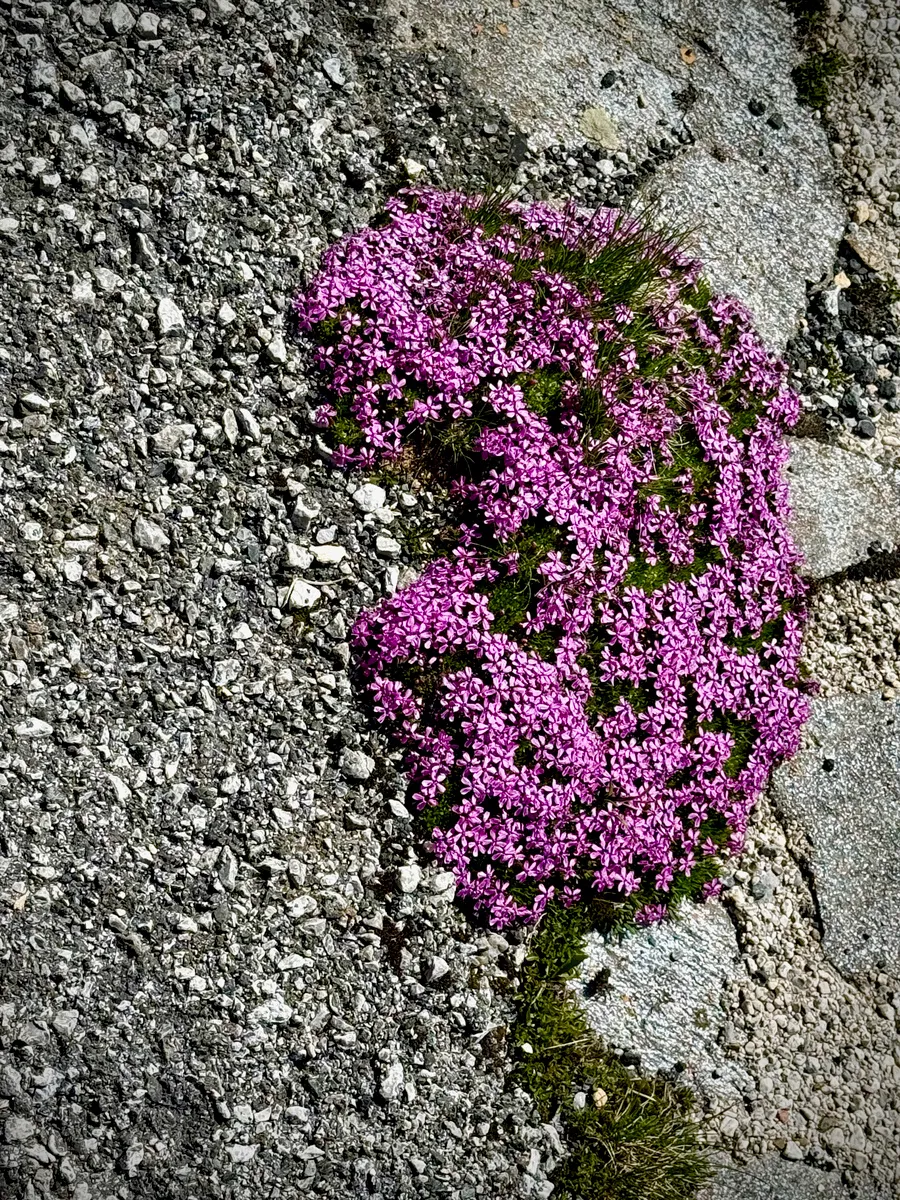
A little over 2000 meters above sea level, the shrubs disappeared. All that remained around the road were rocks and patches of hardy grass. Higher still, streaks of snow began to appear, and I finally reached the saddle beneath Edelweißspitze. I track-standed to give way to a line of descending cars, then turned up toward the peak.
That final push, less than 1.5 km of cobbled hairpins, averages nearly 12%. I had to stop twice. And then, four hours and nearly 60 kilometers after I left my B&B in Mittersill, I arrived at the top.
My legs were wrecked.
But I was proud of myself. After last year’s brutally hard start on Colle delle Finestre, and the emotionally overwhelming ascent of Col de la Madeleine, I’d made a conscious effort to change how I approached climbs, especially while touring. I’d learned to pace myself, to allow for rests without guilt. I knew now that stopping mid-climb wasn’t weakness or dishonor.
Even so, during those final 1000 meters, I truly thought my legs might explode.
Then, as if in answer to my needs, a restaurant appeared, and serving pasta! I ordered a plate of spaghetti Bolognese, a huge glass of cold sparkling water with blackcurrant syrup, and refilled my bottles. Hungry despite all the gummy worms, I devoured the meal, relishing every bite, and soon after, started the descent.

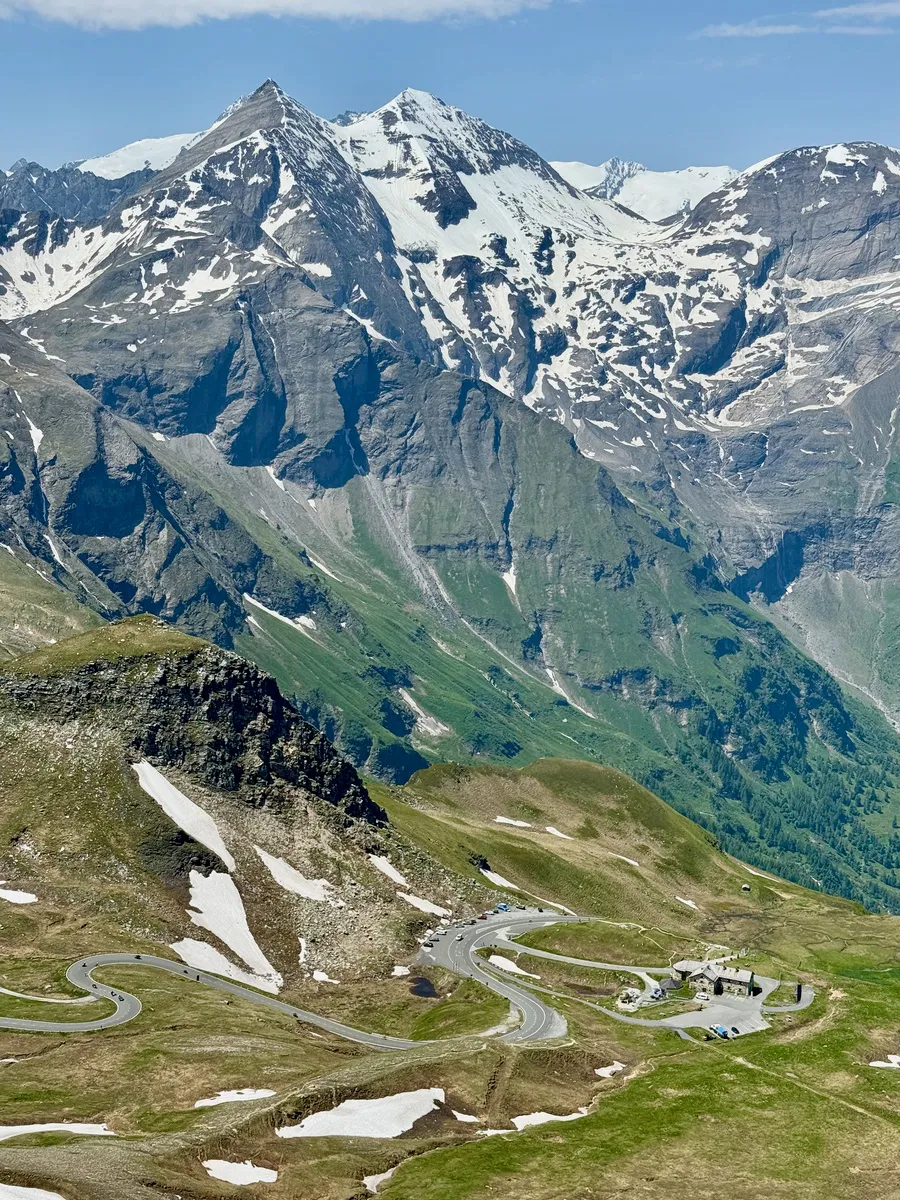
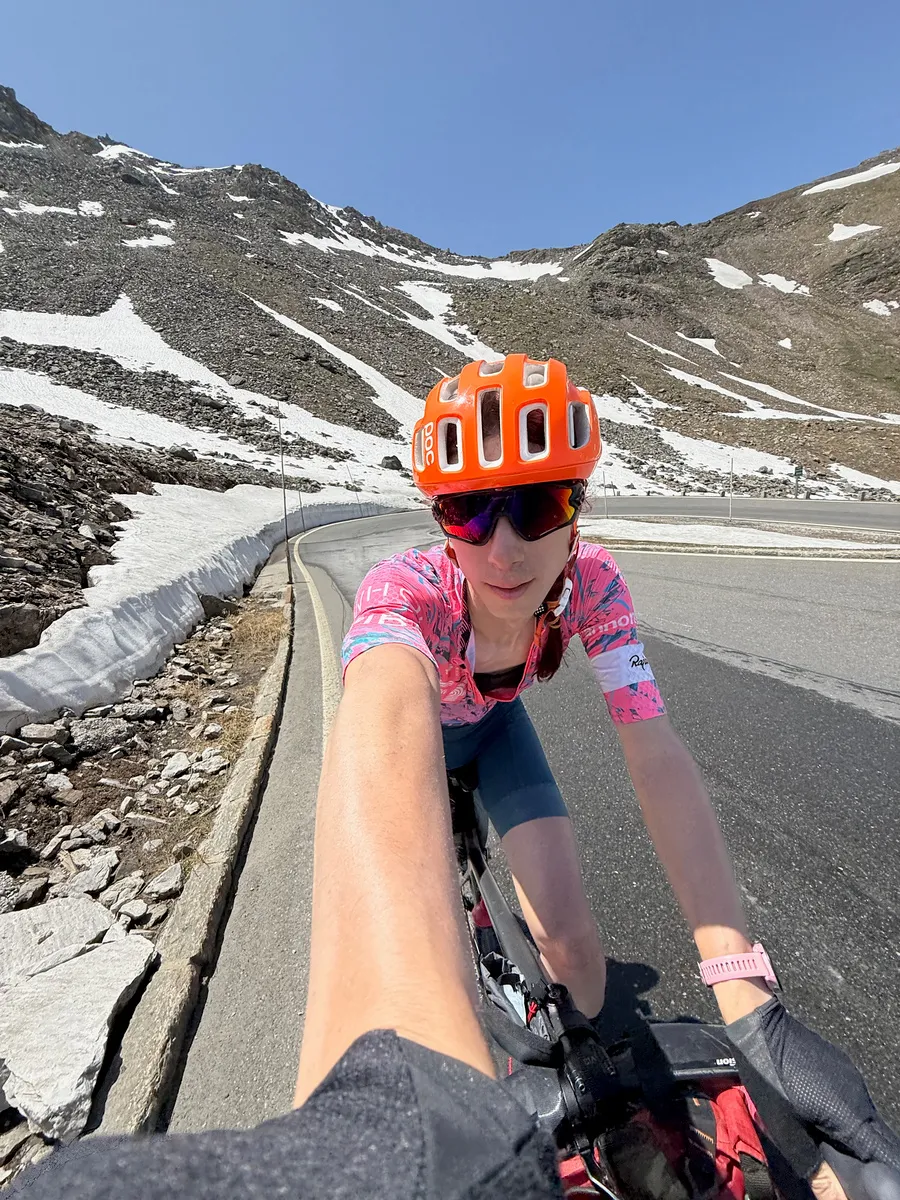
I passed a few cars on the bumpy cobbles and sped toward the Hochtor tunnel. But before I reached it, there was still one more small climb. Tucked into a narrow ravine and shaded from the sun, it offered a rare treat: the road was flanked by lingering snow walls. The melt made the tarmac wet, but I didn’t mind — it was an experience. I made a mental note: I need to come back to the high Alps in late May or early June, when some roads are still carved through towering tunnels of snow. Stelvio, maybe?
Zig-zagging through the parking lane, I reached the Hochtor tunnel. One last glance at the views behind me, and then I rode into a world-changer. Just 300 meters later, I emerged on the other side of the ridge into an entirely new landscape. It was also the start of the descent. I tucked in, got low, and shot down the mountainside.
Sadly, the joy was short-lived. A motorhome plodded ahead of me, and with poor visibility and a steady stream of oncoming traffic, I had no chance to pass. I eased off, switched into “enjoy the views” mode, and rolled downhill, dragging the brakes and weaving from side to side to break the monotony. As I descended, I debated whether to tackle the Kaiser-Franz-Josefs-Höhe or simply call it a day and head for the valley. My legs were tired. Really tired.
But when I reached the roundabout, I turned upwards. I didn’t know when — or if — I’d be back here again, and I knew I’d kick myself if I passed up the chance to see the Großglockner from across the valley. Plus, it meant I could avoid the traffic jam behind that crawling motorhome. “Last big climb for today,” I told myself, clicked down a few gears, and got back into the zone.
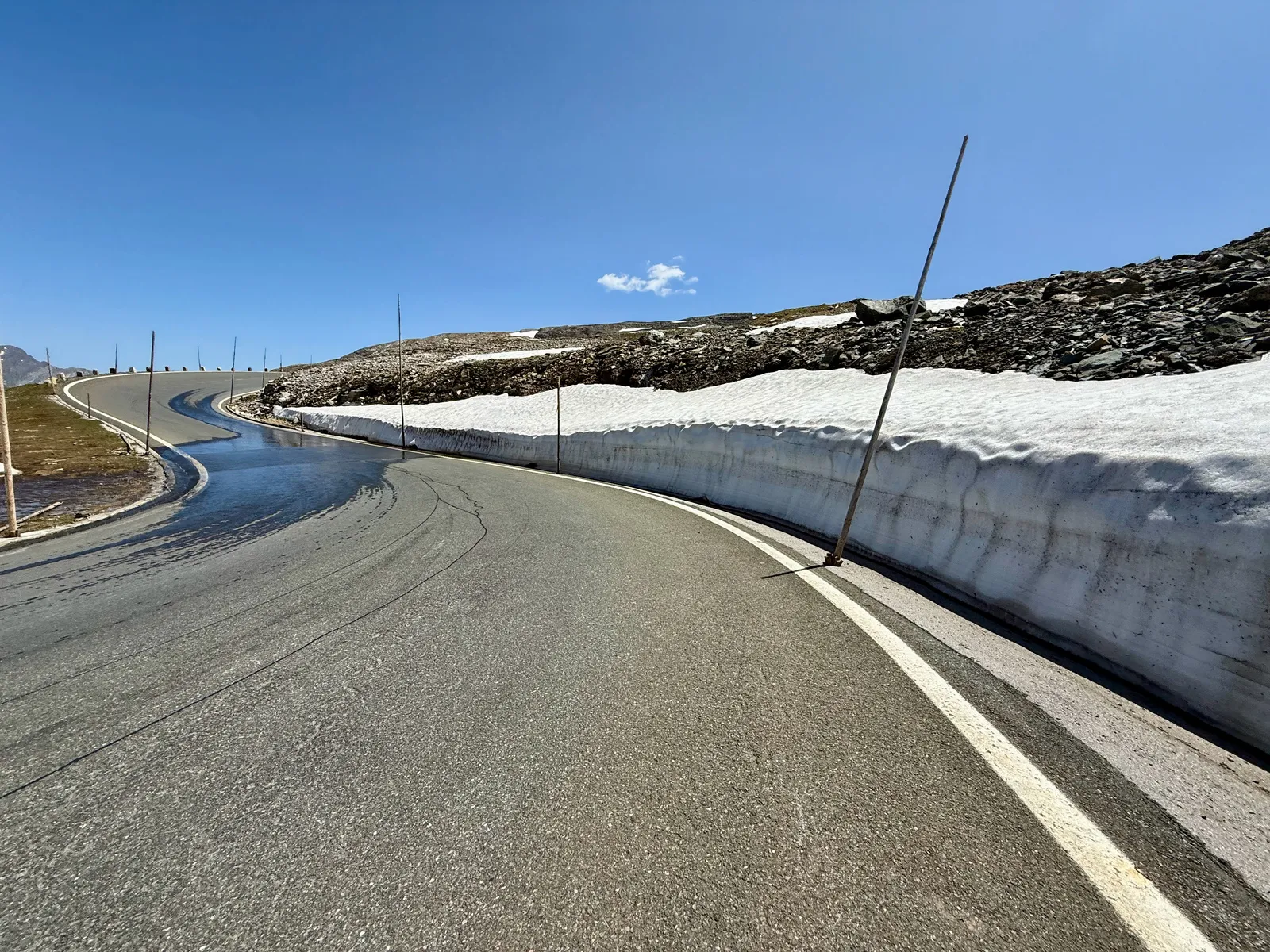
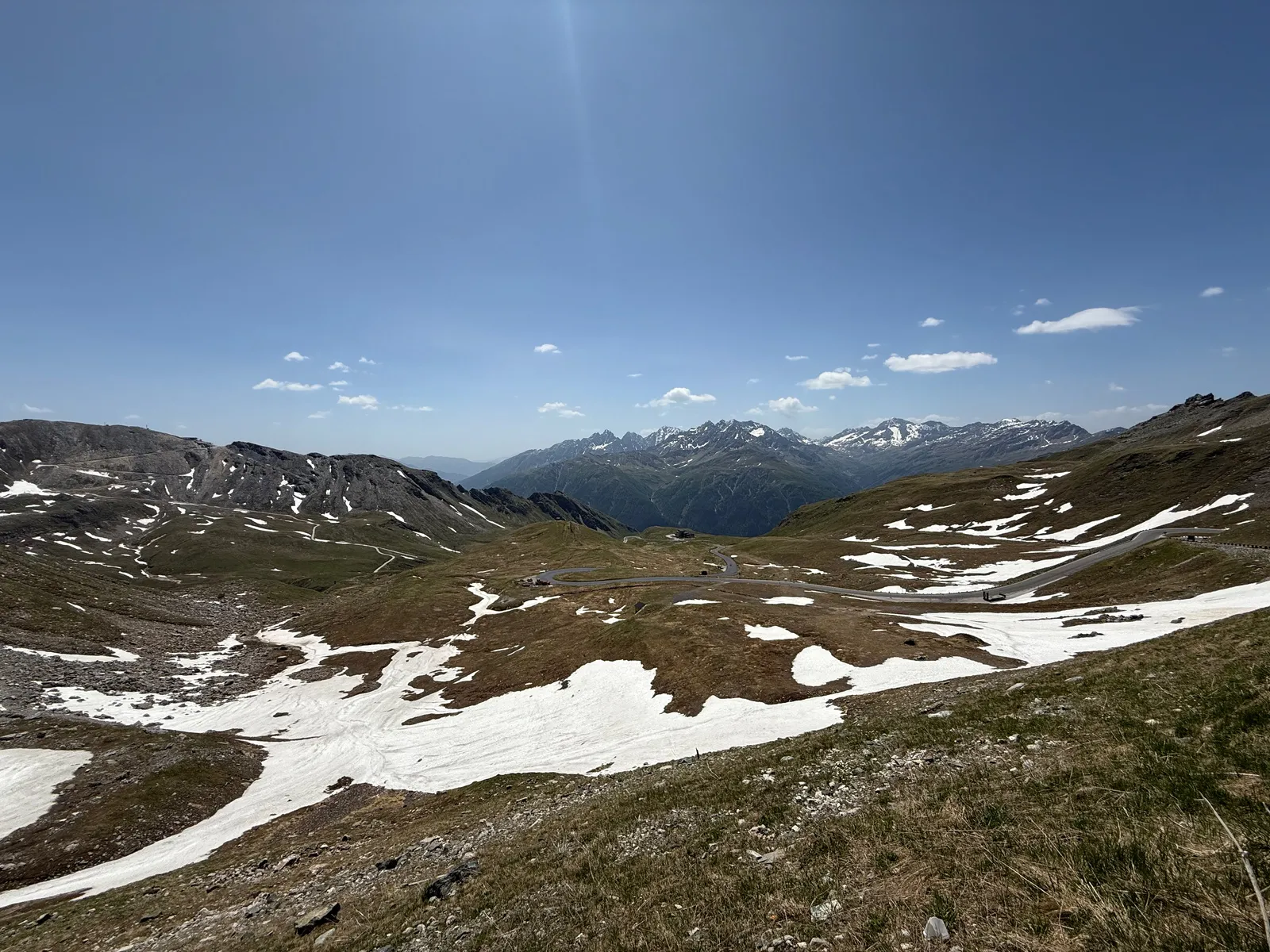
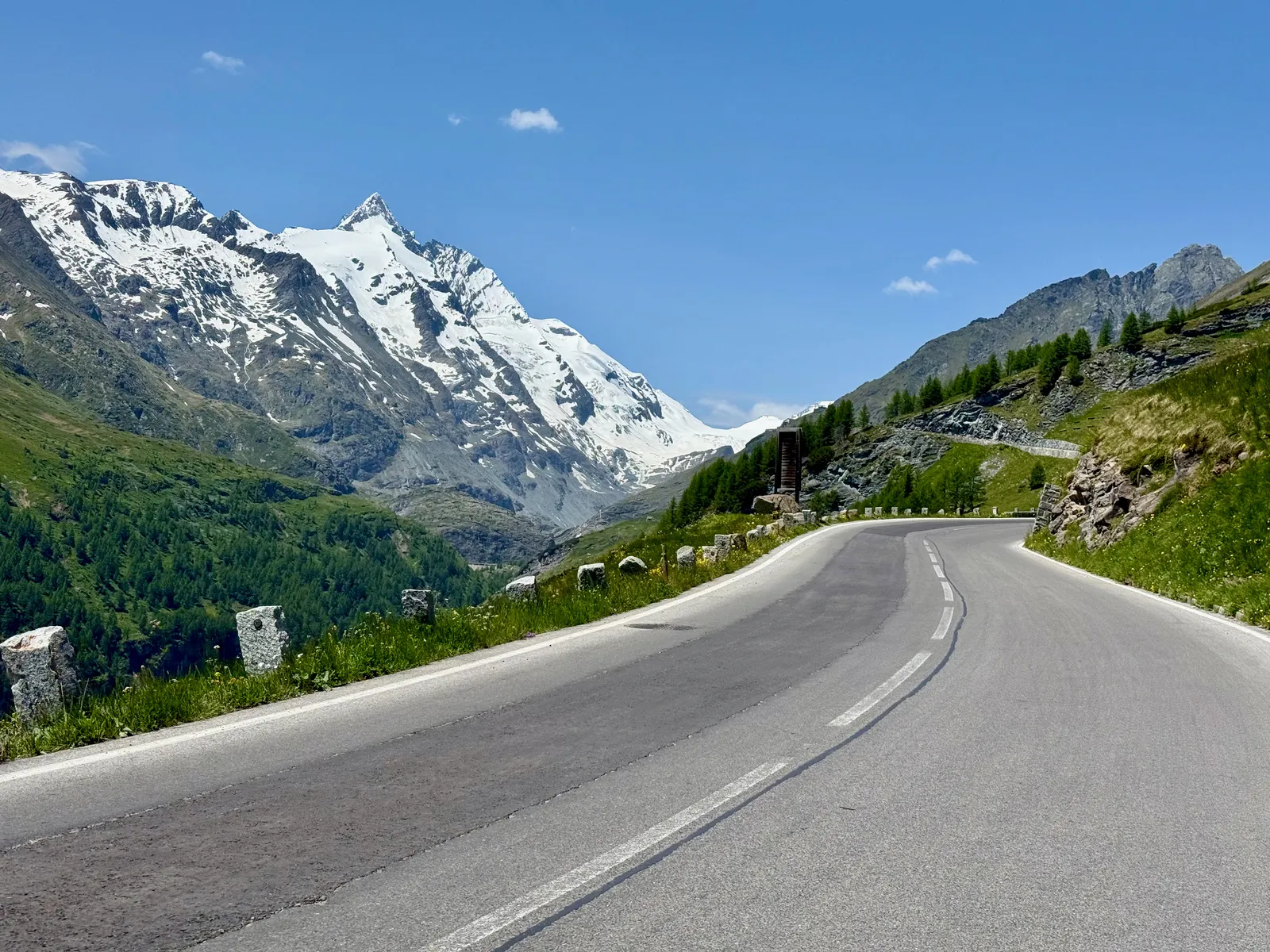
While the climb to Edelweißspitze had been busy, the cars and motorcycles generally kept a respectful speed and distance, making me feel safe, for majority of time. Here, though, I stumbled into some sort of race car gathering. A mix of modern supercars and older, roaring machines tore up the mountain, cutting racing lines through blind corners, cresting ridges with no visibility, and completely disregarding the traffic around them. It was insane, and honestly, terrifying.
Still, slowly but surely, I made my way to the final push. Up to that point, the climb hadn’t been too hard and hadn’t given me much trouble. But as I neared the gallery that leads to the viewpoint, the line on my Wahoo turned deep red. Steep. Really steep. Fortunately, it wasn’t far. I toggled between seated and standing every few pedal strokes, managing to grind my way up.
At the viewpoint balcony, I snapped a couple of quick photos. But overwhelmed by the crowds, and conscious of the long journey still ahead, I didn’t linger. I clipped in and pointed my bike downhill.
And this time, the descent was prime. With just a couple of motorcycles ahead, I could really let loose — using every inch of my lane, reading the turns, feeling the speed build with every curve. On the upper part of the descent I even managed to hang with the motos, until they turned left to climb back toward Hochtor. I went right, towards Winklern, and the road only got better. Wide, smooth tarmac and long, sweeping turns made for one of the best stretches of fast descending I’d ridden in a long time.
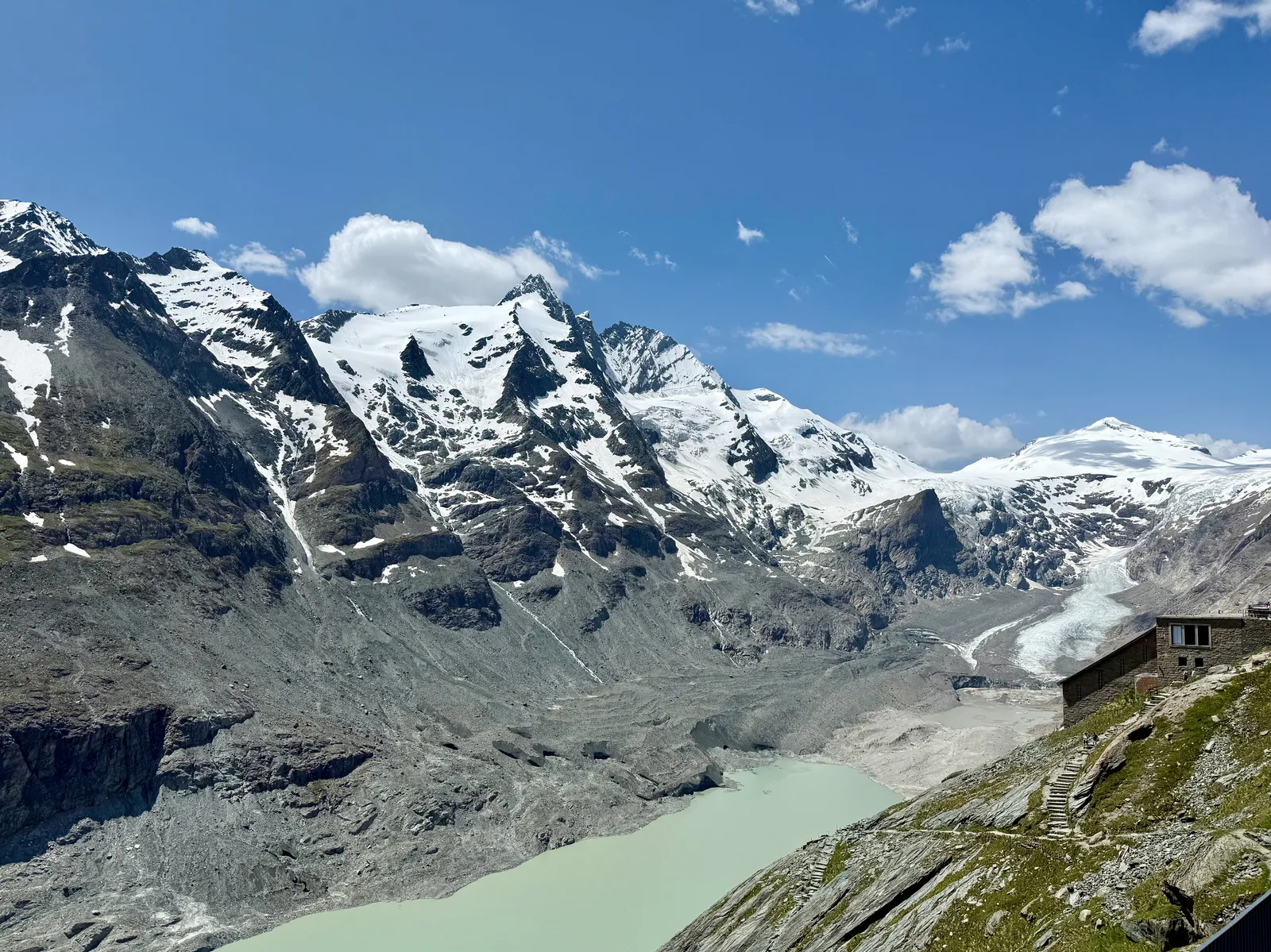
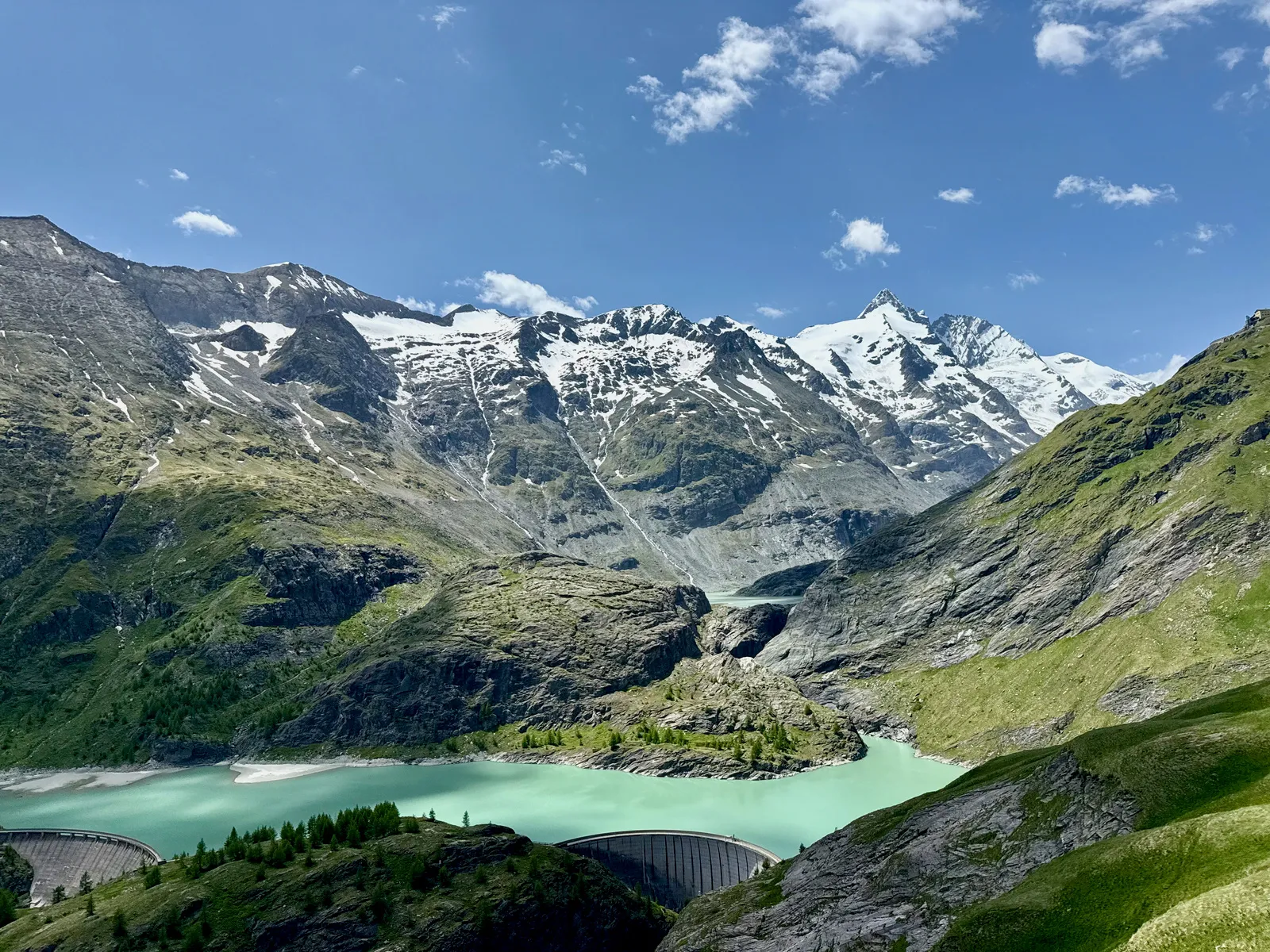
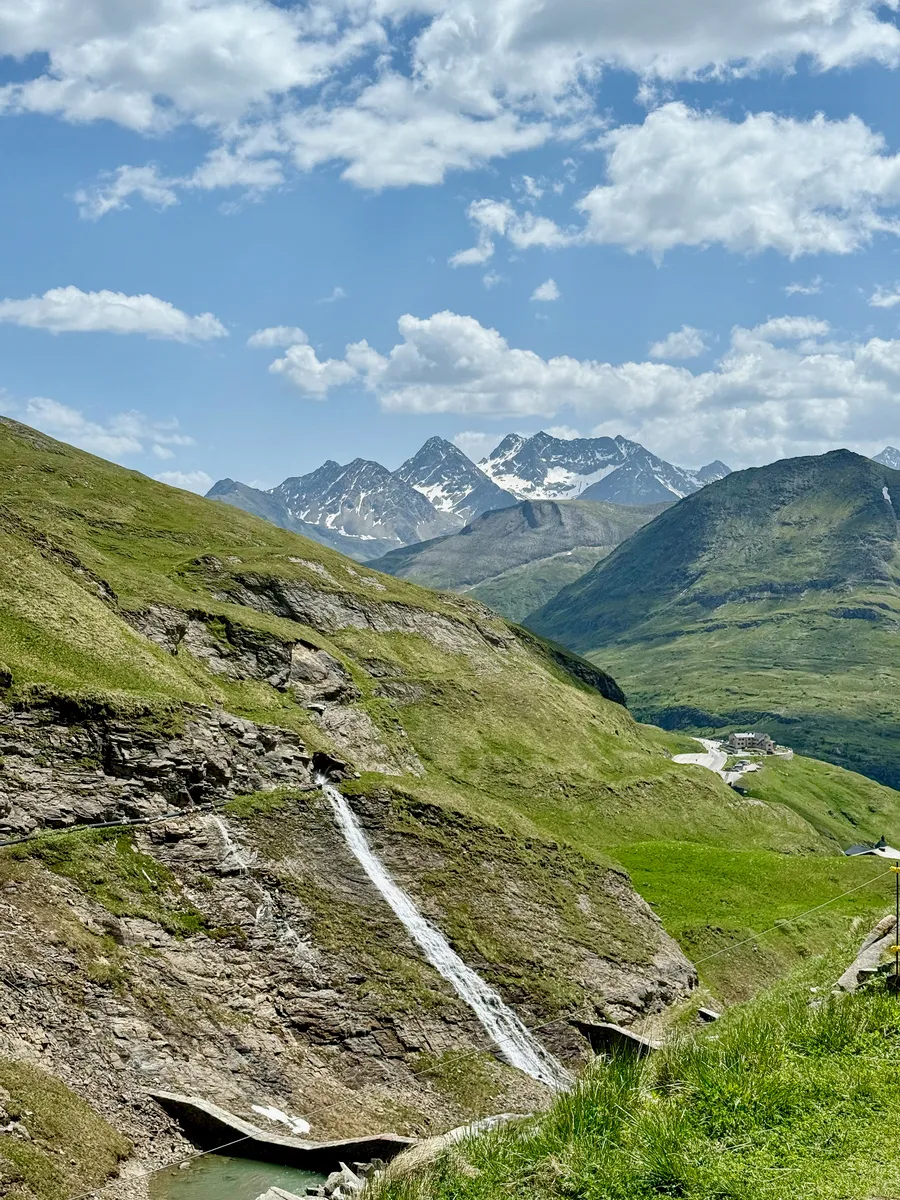
But I didn’t drop all the way to the valley floor. At the earliest opportunity, I veered off onto a quiet side road, slowly descending along the valley’s edge, away from the noise and traffic of the main route. The road was narrow, the tarmac rough and patched, which slowed me down considerably, but the peace and stillness of the surroundings more than made up for the lost speed. It was a technical descent: tight hairpins, uneven surface, constantly shifting lines. It kept me on my toes, and that focus made it even more enjoyable.
After a few more kilometres winding through open fields, and one small hill, I arrived in Winklern. From there, I had two options: either climb a small pass and descend to Lienz to catch a train to Spittal an der Drau, or ride over 60 kilometres along the valley.
It was 3 p.m. The closest grocery store was in Obervellach, roughly halfway. I badly needed a market stop. Sunday was coming, and no shops would be open along my planned route. I had to stock up on everything: breakfast, dinner, and snacks for the next day’s ride.
Two hours until closing. The day was still long, and I was still moving well. I decided to ride.
Unfortunately, this would prove to be an ordeal. As soon as I turned down into the valley, I was hit with an unmistakable, and mentally painful - a headwind. Around the same time, I started feeling something else entirely: a sharp, acidic suction deep in my stomach.
What happened, you might ask? Throughout most of the day, I’d been eating sour sugar–coated gummy worms. Add to that the acidity of the Bolognese sauce and a big glass of blackcurrant syrup, and I’d created a perfect storm in my stomach. And now it was making itself heard — loud and clear.
I kept fidgeting with my head unit, cycling through data screens as if checking distance and elevation every thirty seconds would magically make it easier. Somewhere along the way, I had to stop and reapply chamois cream. Chafing was looming, and I needed to stay ahead of it.
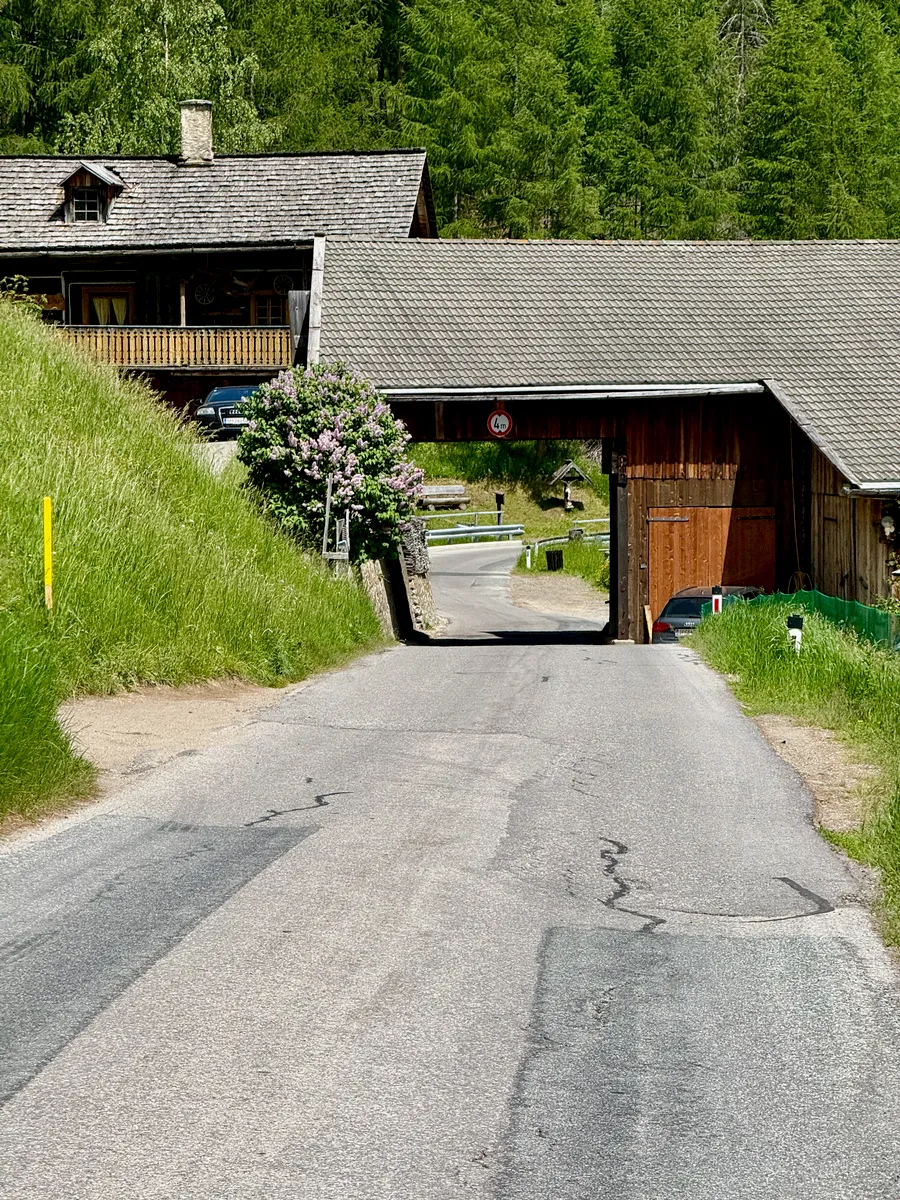
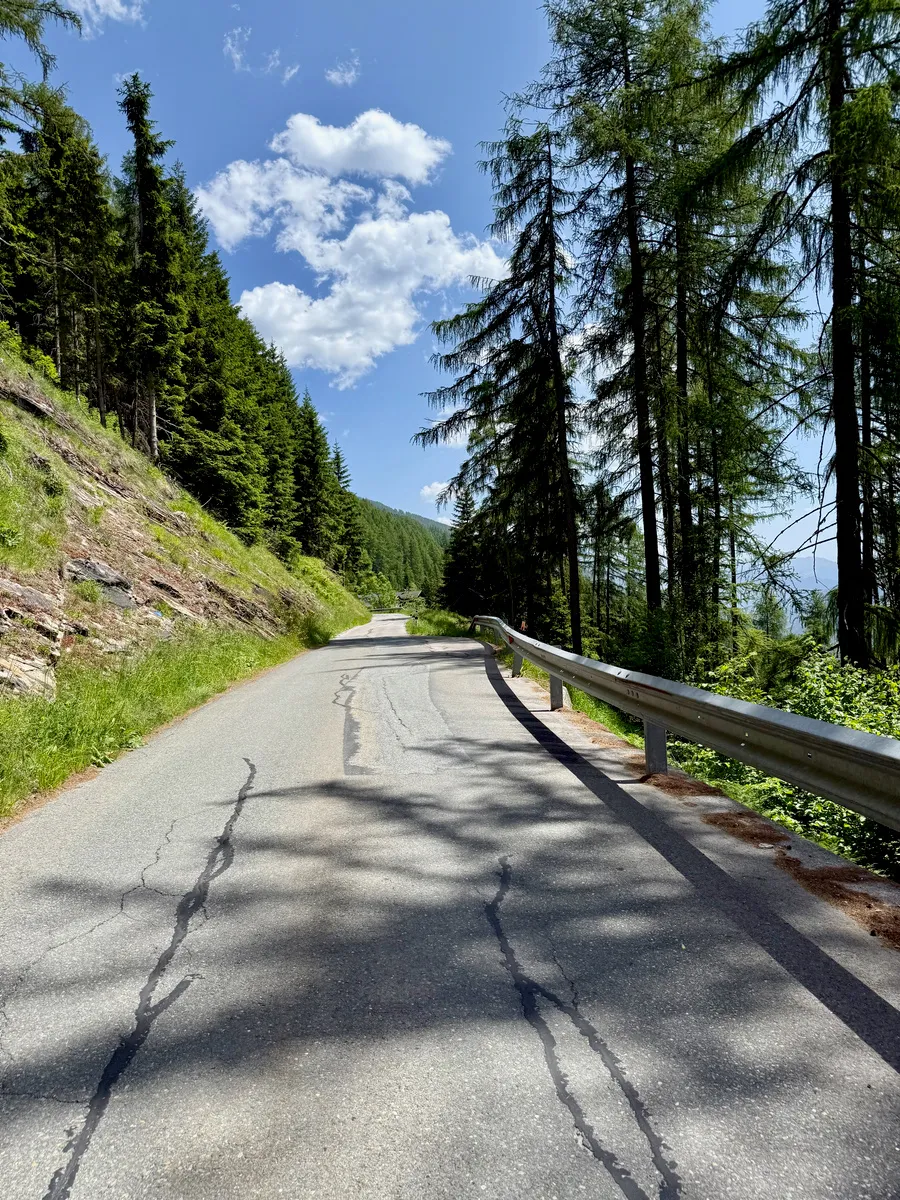
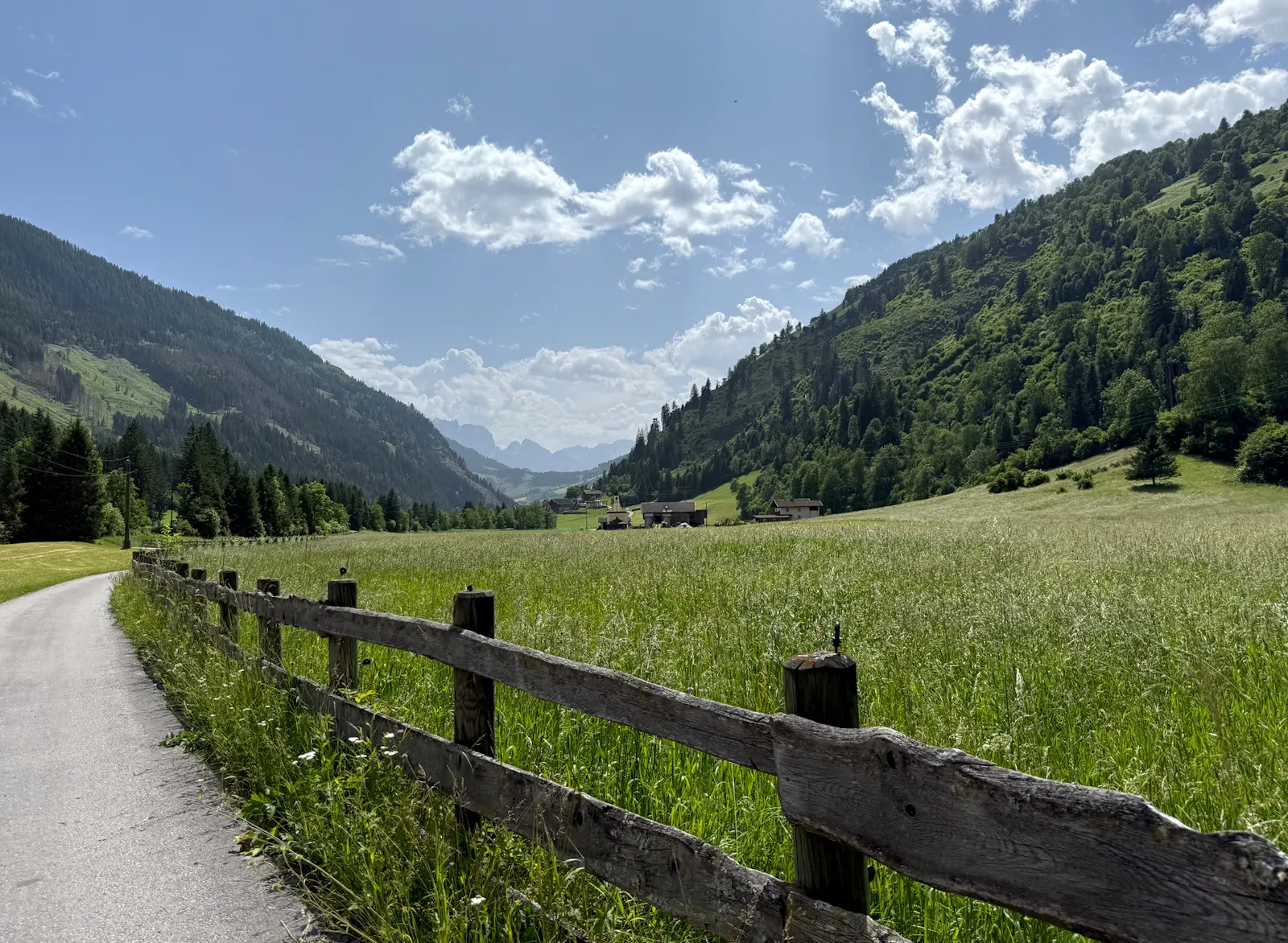

I could barely eat. I forced down the occasional sweet, but even that became difficult. My energy crashed. My power dropped significantly, along with my speed, and so did my motivation. My lower back started to ache after hours in the saddle. At the same time, as I lost elevation, the temperature rose, and I soon realized I’d need to ration my water just to make it to the shop.
I hit rock bottom. I could still see the landscape, but I wasn’t really seeing it anymore. I registered its beauty, but lacked the processing power to truly appreciate it. I couldn’t be bothered with the official cycling paths — those that wound up and down through villages and skirted the edge of the forest. I stuck to the main road. It was the flattest, shortest route across the valley. It also meant full exposure, no shade, just hot tarmac radiating back the sun’s heat. But if that was the price of getting there faster, so be it.
After what felt like an eternity, I finally reached the Spar in Obervillach. I bought food for the next day, grabbed some drinks, and picked up a high-protein milkshake, hoping it would settle the acidic turmoil still churning in my stomach. Despite my love for heat, stepping out of the shop’s air-conditioned comfort was like hitting a wall — the heat felt aggressive, almost personal. I drank the shake, refilled my bottles with water and juice, and split the rest of the groceries between my rear bag and a musette. After a short rest in the shade, I pushed off for the final stretch of the day.
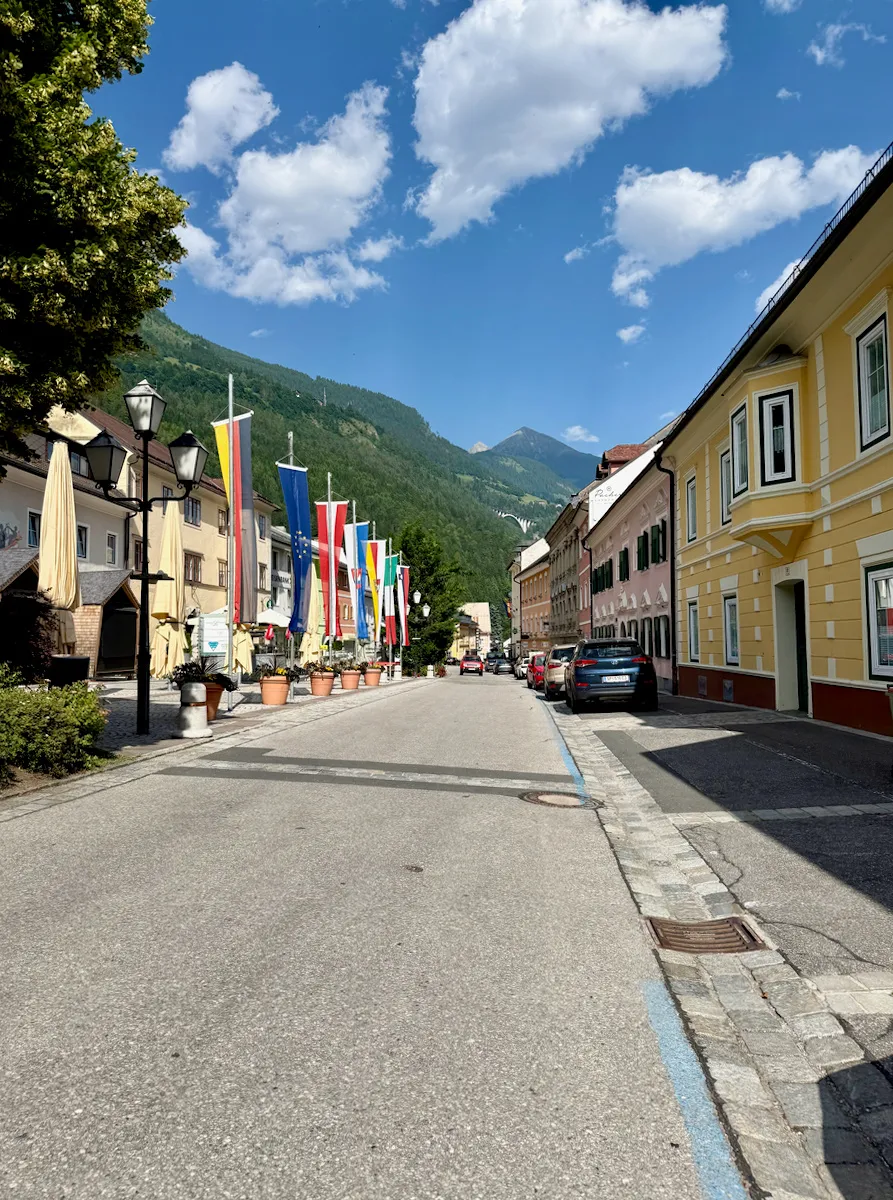
The route followed the main road toward Spittal an der Drau. I was mostly a gentle descent, interrupted by a few short kickers. About 15 kilometers in, the bike path ended and I had to merge onto a busy main road. The traffic was heavy, but the drivers were respectful and gave me space. I was grateful for that. What I wasn’t grateful for was my musette, which kept sliding forward and trying to dangle in front of my belly. It was just heavy enough to shift constantly, and I couldn’t wear it backpack-style without the strap chafing the back of my neck. So I kept adjusting it every few minutes, trying not to lose my mind.
Eventually, I rolled into Spittal. As I rode through the center toward my hostel, the smell of pizza hit me like a siren call. “Gosh, I want one,” I thought. But I was also completely spent. My mind had one goal: get to the finish line. A few more turns and I was there — a hostel tucked into the city’s sports complex on the edge of town. And, as if by miracle, just across the road was a pizza place, owned by the same person who ran the hostel.
Now that I was safe and done for the day, I allowed myself a reward. I postponed my usual post-ride cleanup and went straight for the food. I ordered a salami pizza, a Coke, and a non-alcoholic beer, trying to hit a mix of sugar, salt, and fluids to start restoring some kind of balance. When the pizza arrived, steaming hot, I waited a moment, then dug in.
But with each bite, it became clear: I was in worse shape than I thought. That acidic stomach cocktail from earlier had really wrecked me. I barely finished a single slice before I had to ask for a takeout box. My stomach had fully shut the door on food.
The hostel was nearly empty, and I had a six-bed bunk room to myself. After a quick shower in one of the strangest bathrooms I’ve ever seen — two shower heads, with no curtains or dividers between them, I collapsed on my bunk. I managed to choke down one more cold slice of pizza, washed it down with another non-alcoholic beer and a handful of sweets, and crawled into bed. Half-hungry, stomach still upset, legs buzzing from the day, I closed my eyes and finally gave in to sleep.
To be continued...
Strava - Day 1 - Zillertaler Höhenstraße, Gerlospass
Strava - Day 2 - Edelweißspitze, Hochtor, Kaiser-Franz-Joseph-Höhe
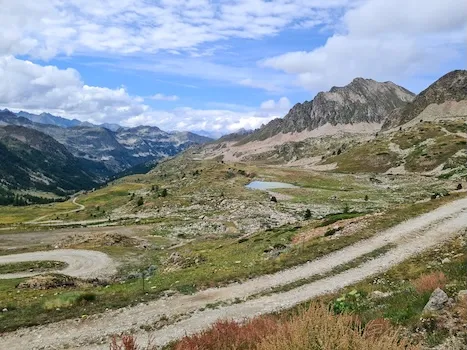
Previous post Tour of Alps - Part 4

